Did you know the goblin tattoo is one of the most intellectually complex choices in fantasy art? Far from being a simple dungeon creature, the goblin is rooted in ancient European and Asian folklore as the ultimate trickster archetype. It is a powerful symbol of cunning intelligence, rebellion, and protection for the outsider.
This guide dives into the deep duality of the goblin’s meaning, explores striking designs like the Regal Trickster, and reveals why the Neo-Traditional style is paramount for ensuring the clarity and longevity of your fantasy ink. If you are ready to etch an emblem of unconventional strength and transformative wit onto your skin, read on to discover how to master the art of the grotesque.
History and Symbolism:
When you choose a goblin design, you tap into a history that is thousands of years old.
The Grotesque Origins:
- Ancient Roots: The idea of the goblin is ancient, starting in European folklore. The word itself has been used since the 14th century.
- A Conflicting Reputation: Historically, goblins were known as small, strange-looking spirits. They could be house-haunting pests or malicious thieves. They were even thought to use magic to shapeshift.
- Modern Fantasy: Today, many people know goblins from fantasy works like Dungeons & Dragons (D&D). They are often shown as small, evil creatures that are easily beaten.
- A Key Difference: In the West, goblins were often used in stories to warn people, showing them as ugly and evil. But in some Asian cultures, goblins, though scary-looking, were seen as helpful protective guards. They used tricks and cunning to keep threats away from people. This wide range of meaning makes the tattoo very personal.
Core Symbolism:
The true meaning of the goblin tattoo is found in its balance of good and bad traits.
- Mischief, Rebellion, and the Outsider: For many, the goblin stands for mischief and a rebellious nature. They are smart and unconventional. A goblin tattoo is often chosen by people who embrace their own differences. It is a bold statement that says your cleverness and spirit matter more than your look.
- Protection and Transformation: Beyond being a trickster, the goblin is also a symbol of protection and guardianship. In stories, they are gatekeepers to secret places or protectors of hidden treasures. The tattoo can mean you are guarding your own secrets or inner strength. The goblin’s ability to shapeshift also makes it a strong symbol of transformation and change in your life.

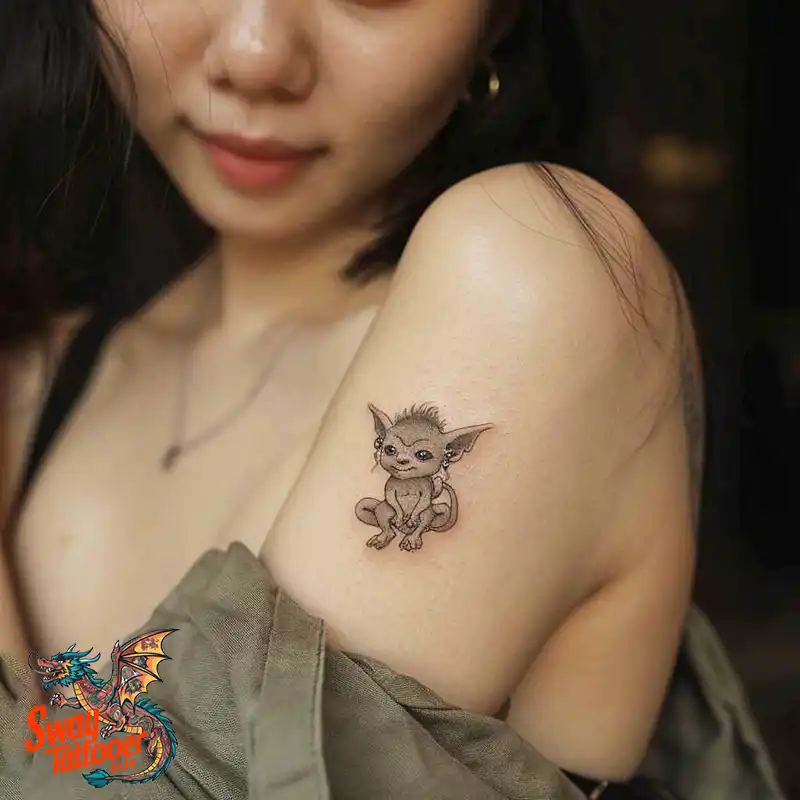
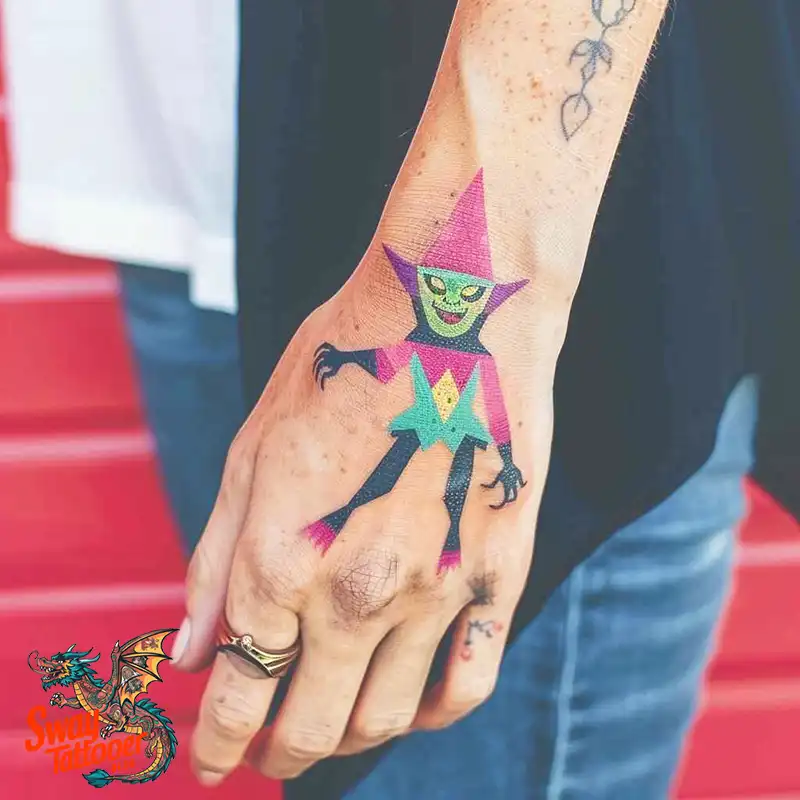
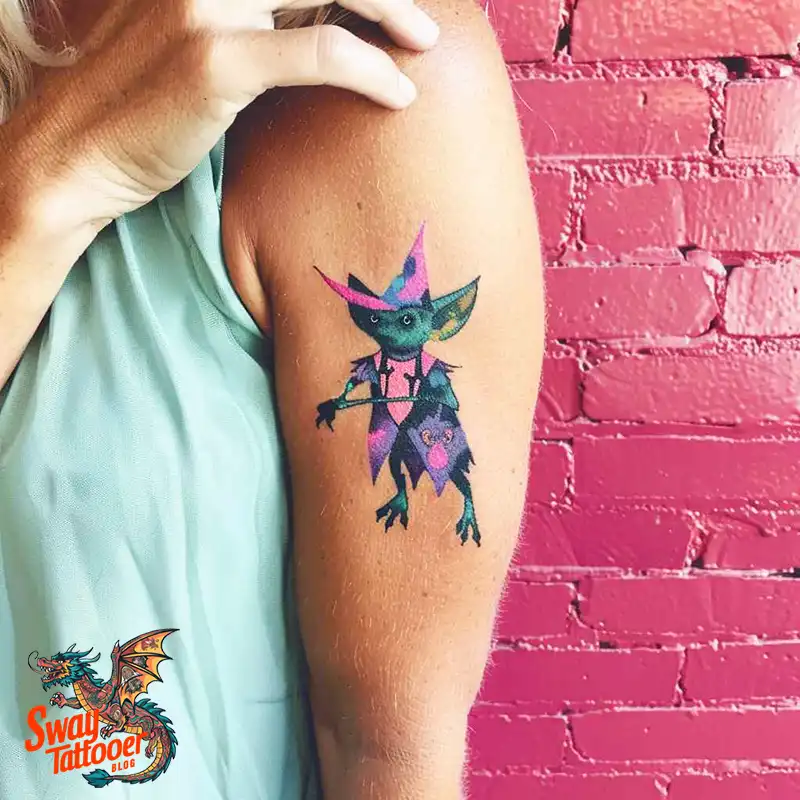
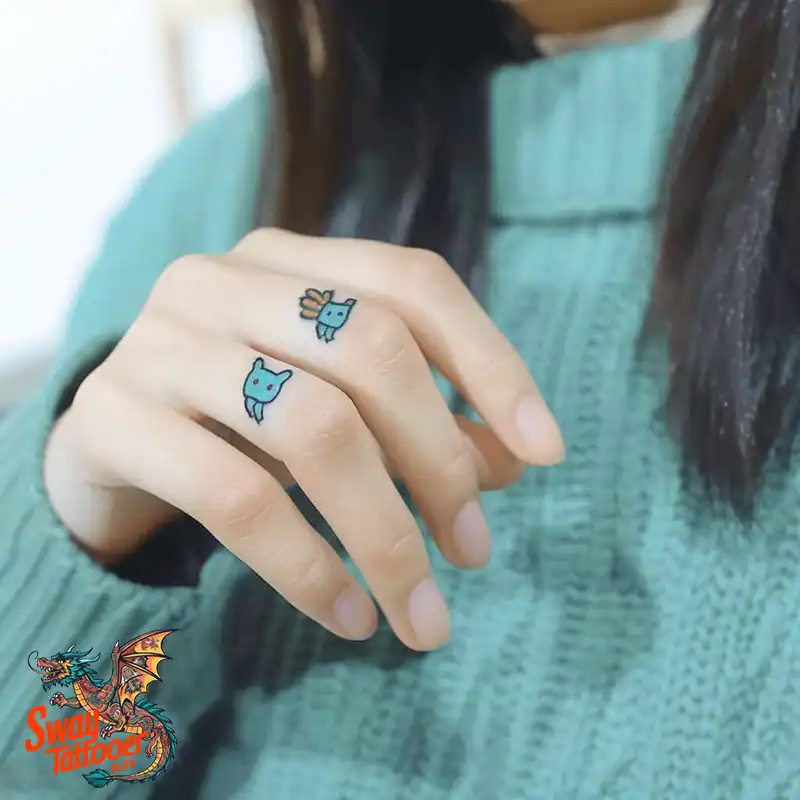
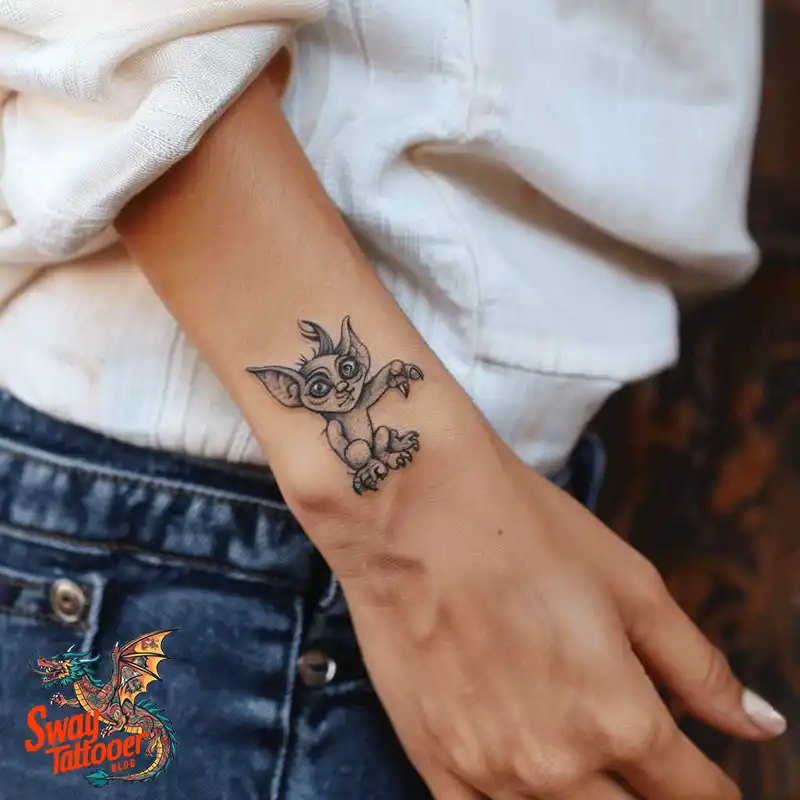

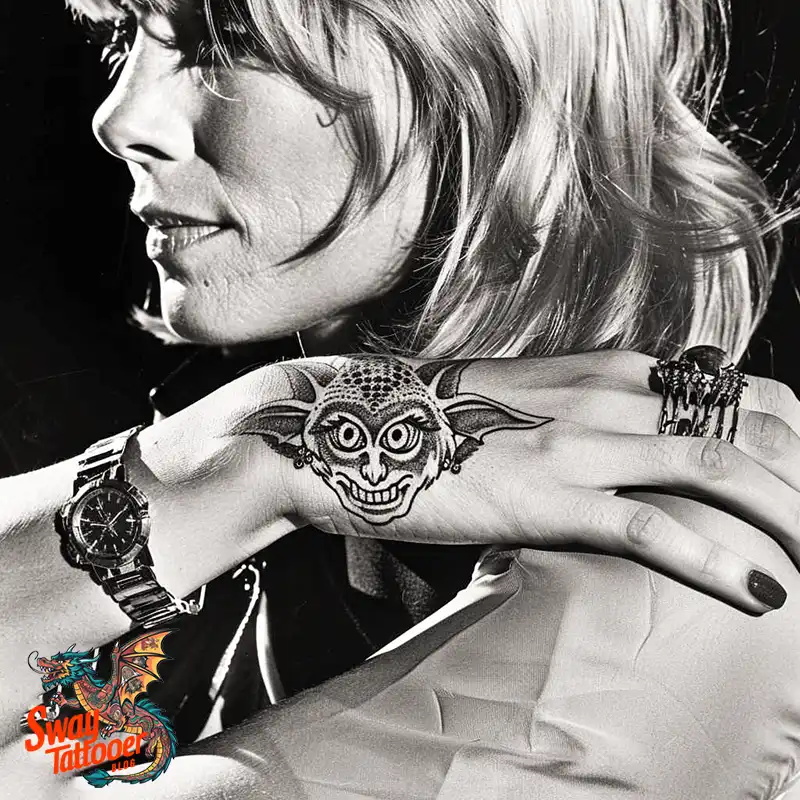

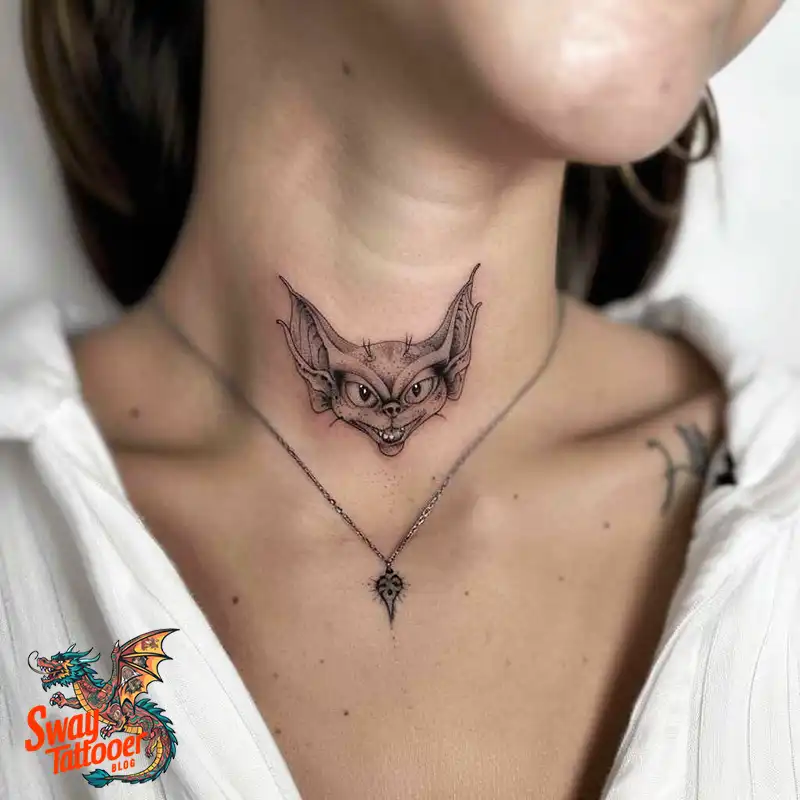
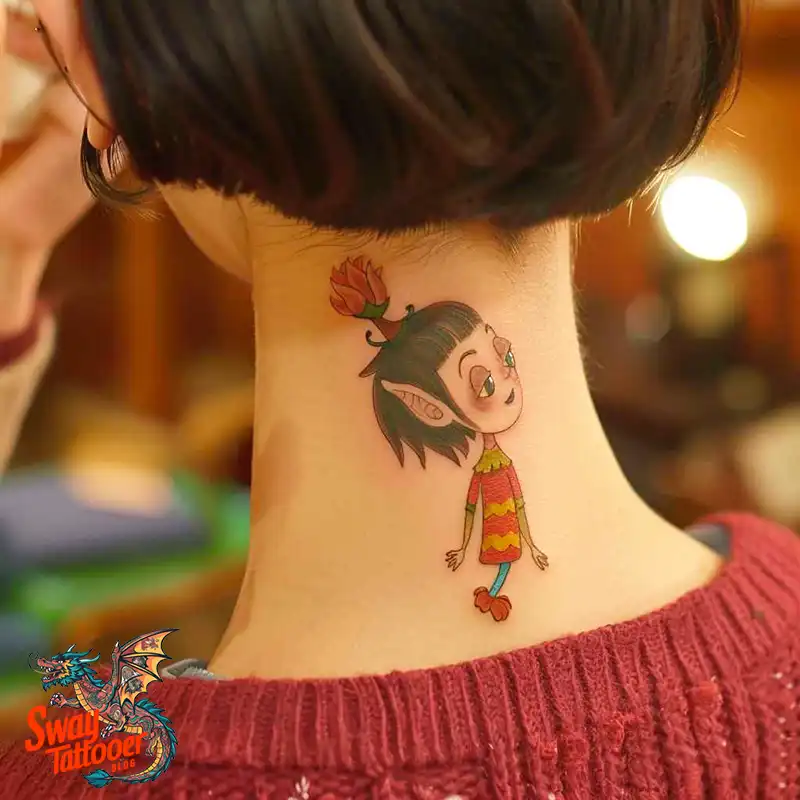

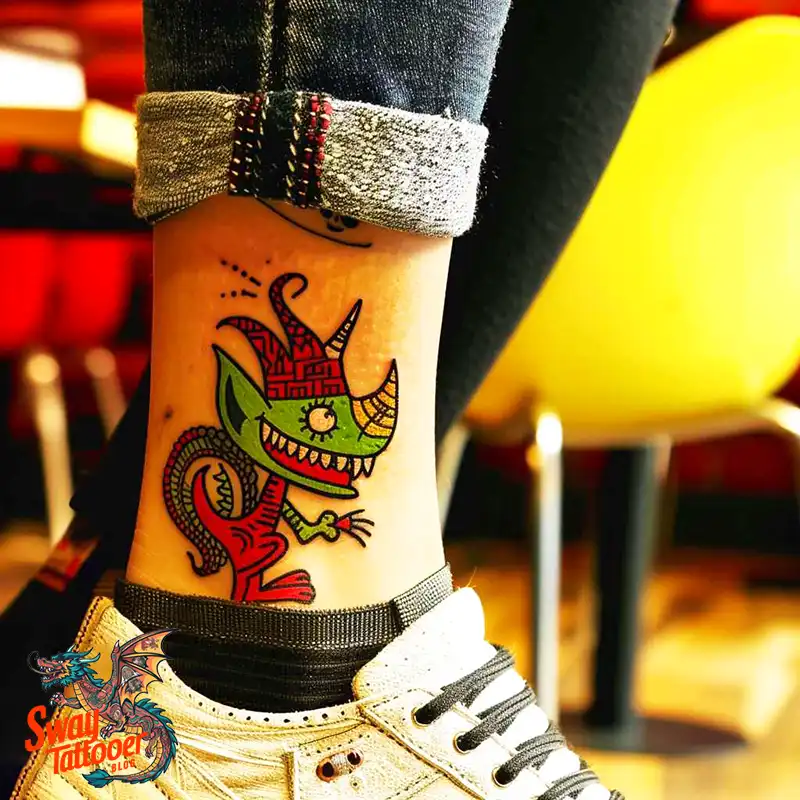
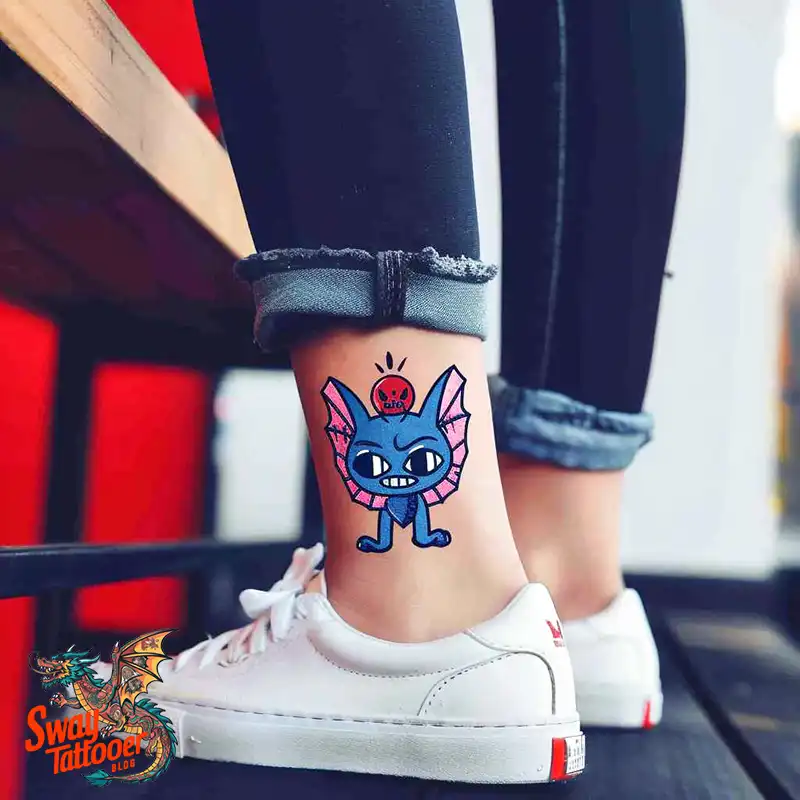
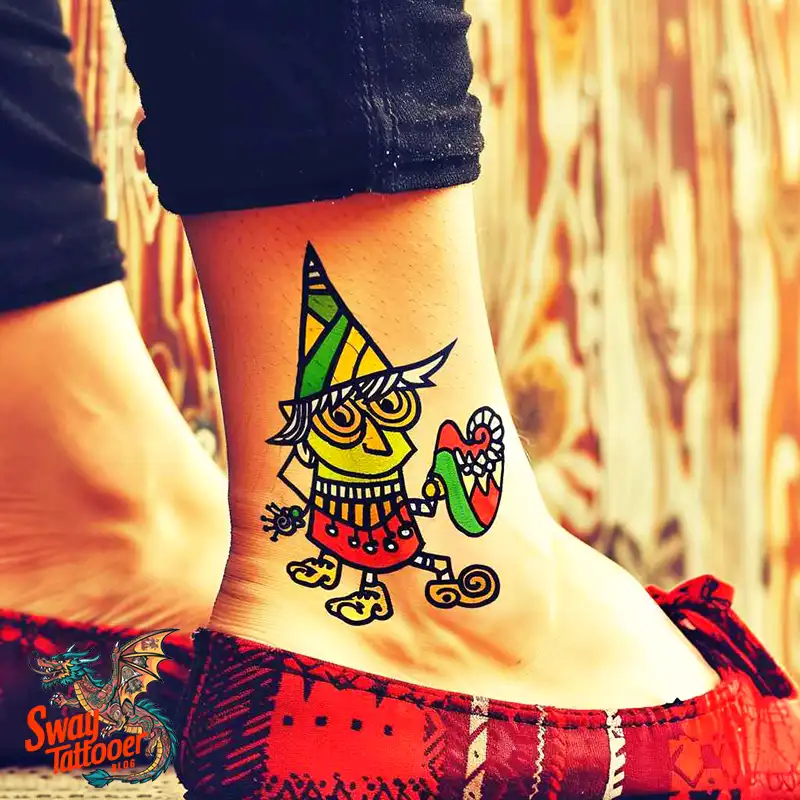
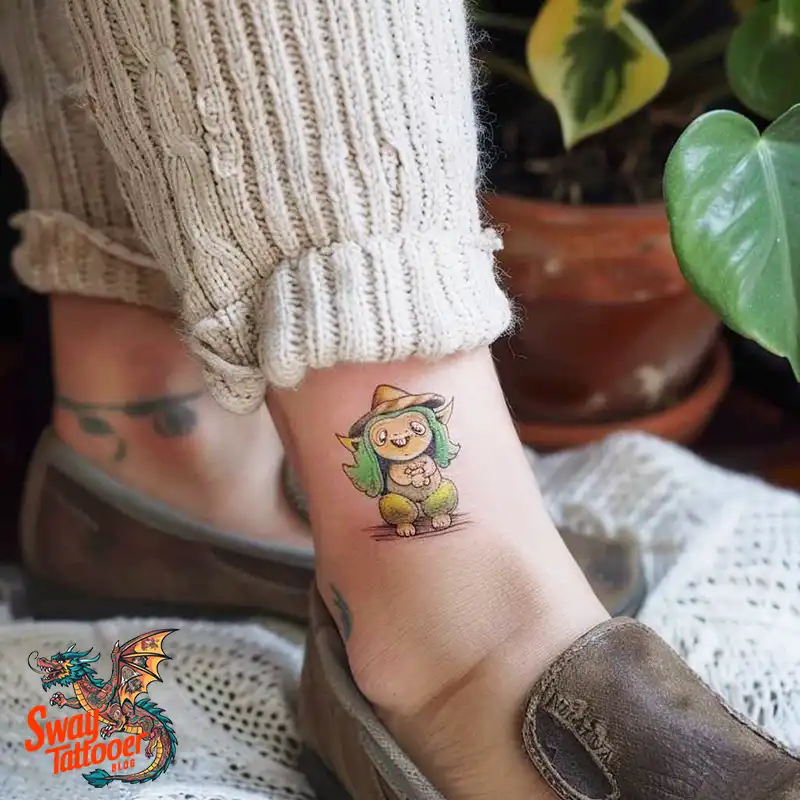
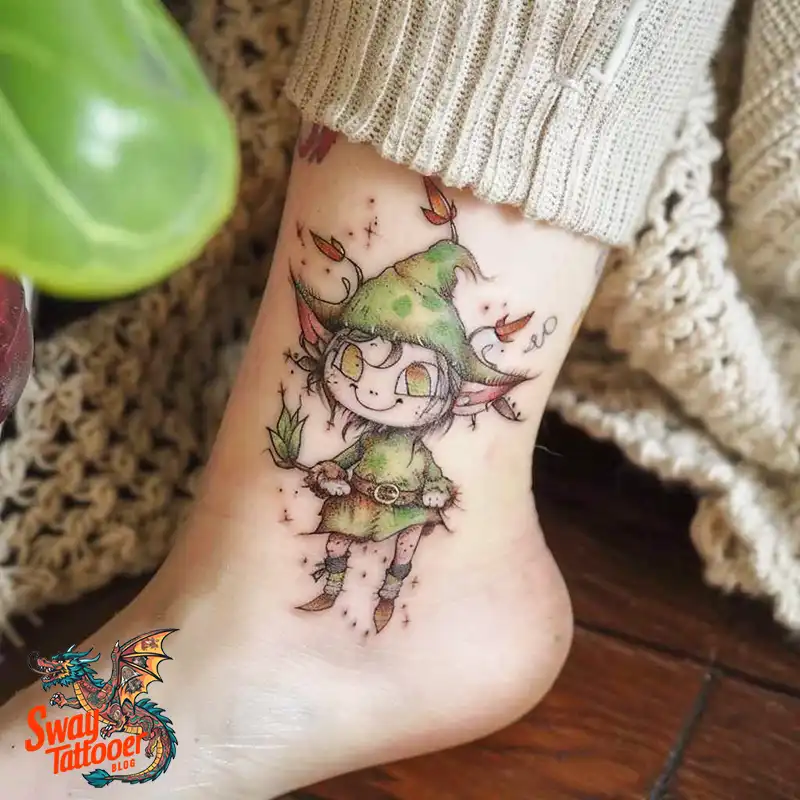



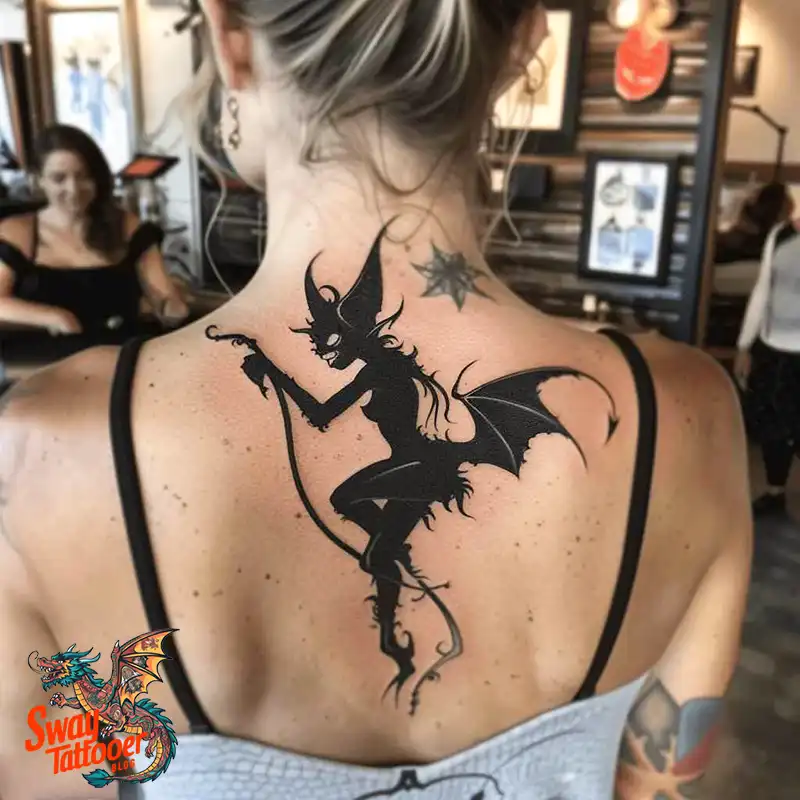
The Psychological Resonance:
The goblin embodies the Trickster Archetype, which adds an intense layer of meaning.
- Challenging the Rules: The Trickster is a figure of disruption and wit. Their job is to challenge the normal way of doing things and bring about necessary change. They show that you must question rules and embrace a little chaos to grow.
- Finding Inner Wit: A famous thinker named Carl Jung said that the Trickster lives inside all of us. He called it an “impish version” of ourselves. This figure helps us face life’s uncertainty with creativity and resilience. Getting a goblin tattoo is a way to say you are ready to face instability with wit and constantly create your own path.
Goblin Tattoo Design Ideas:
Modern artists have many ways to draw a goblin, moving far past the simple fantasy monster.
The Regal Trickster (The Goblin King Motif)
The Goblin King is a popular design because it completely changes the usual story.
- Underdog to Leader: This design means that an underdog can work hard and become a leader. It can honor a non-traditional authority figure or show the wearer’s own rise to power.
- High-Detail Art: This motif requires high-skill artistry. The artist must use detailed shading to draw crowns, ornamental jewelry, and rich textures, like a velvety cloak.
The Goblincore Aesthetic
Goblincore is a style that celebrates the unique beauty of nature’s messy side: moss, bones, mushrooms, and hidden treasures.
- Quirky and Charming: This aesthetic is a whimsical alternative to dark fantasy. It often features the goblin as a trash goblin or a playful creature interacting with these natural elements.
- Design Style: These designs often use fine line or Blackwork for the main figure. They then use bright, gradient colors for things like the colorful mushrooms or critters. This style is both fun and visually strong.
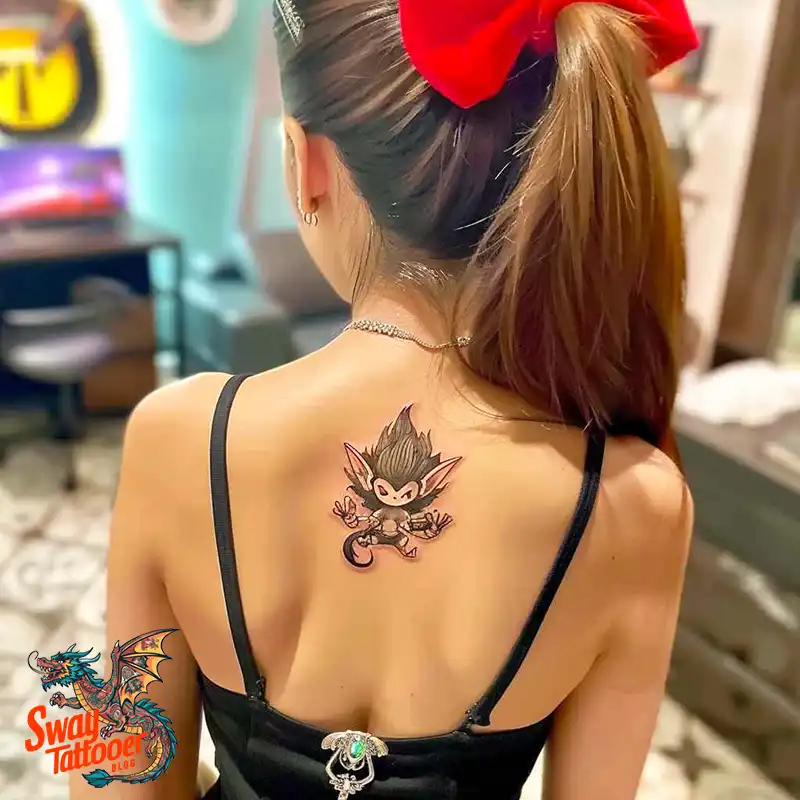

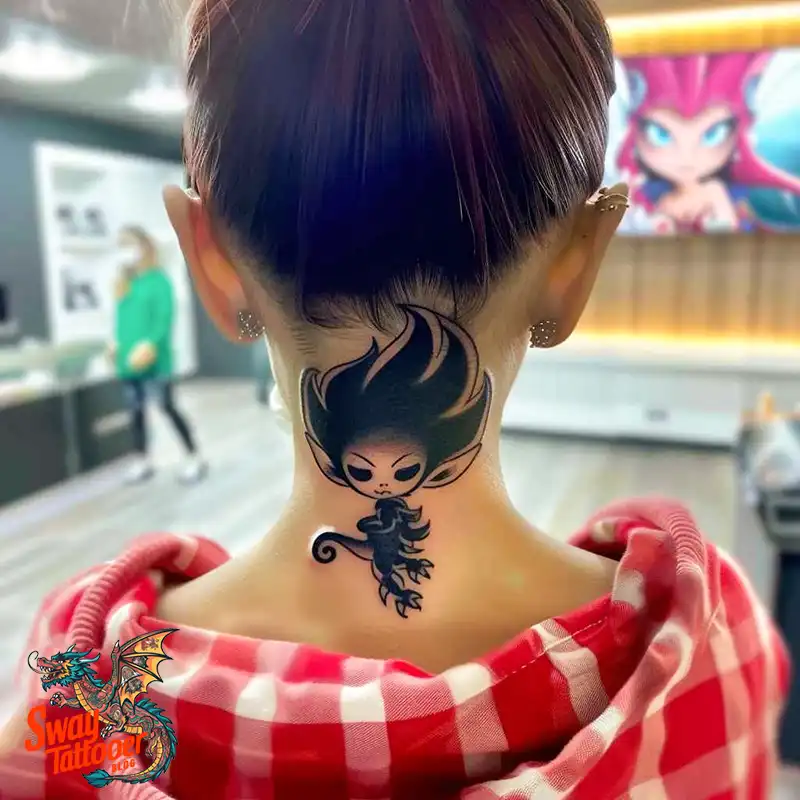




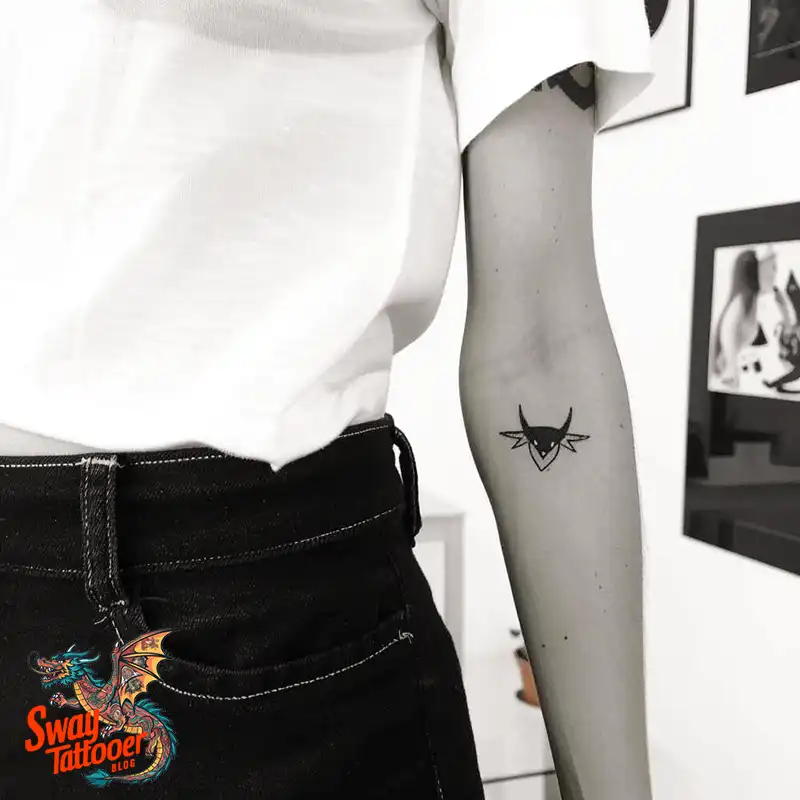
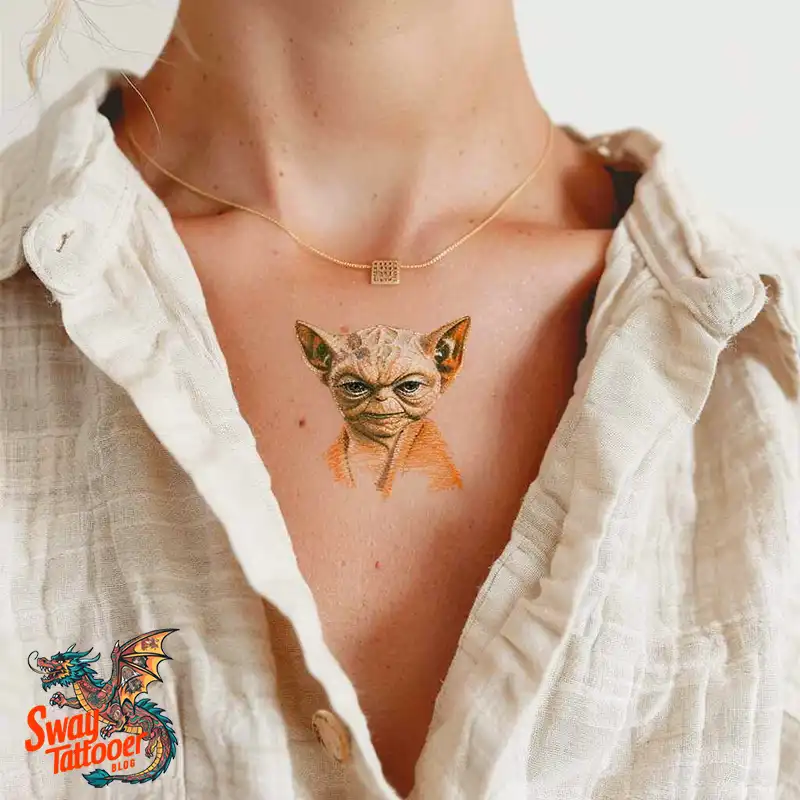
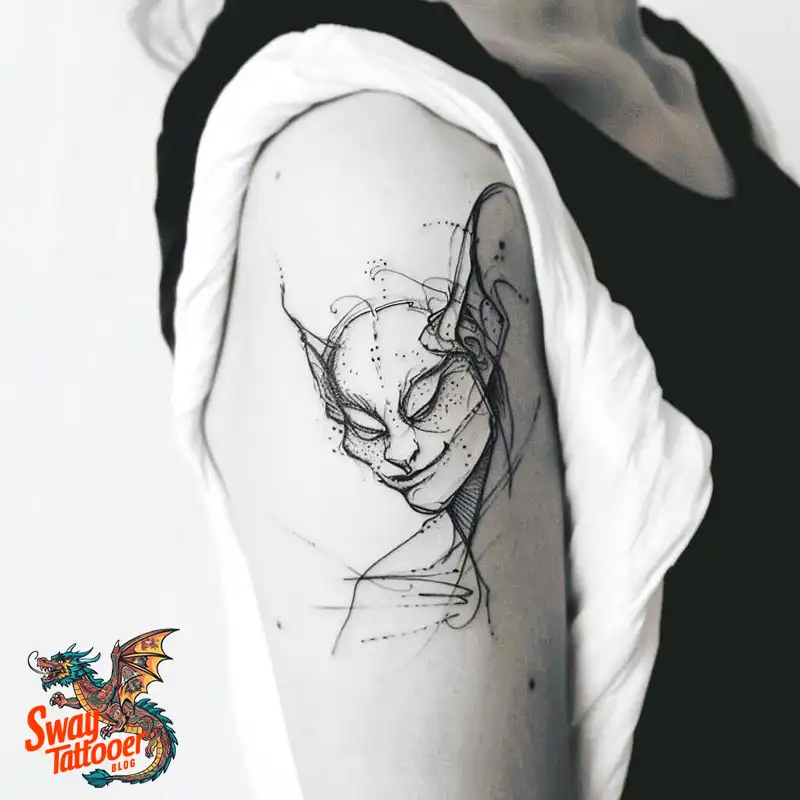
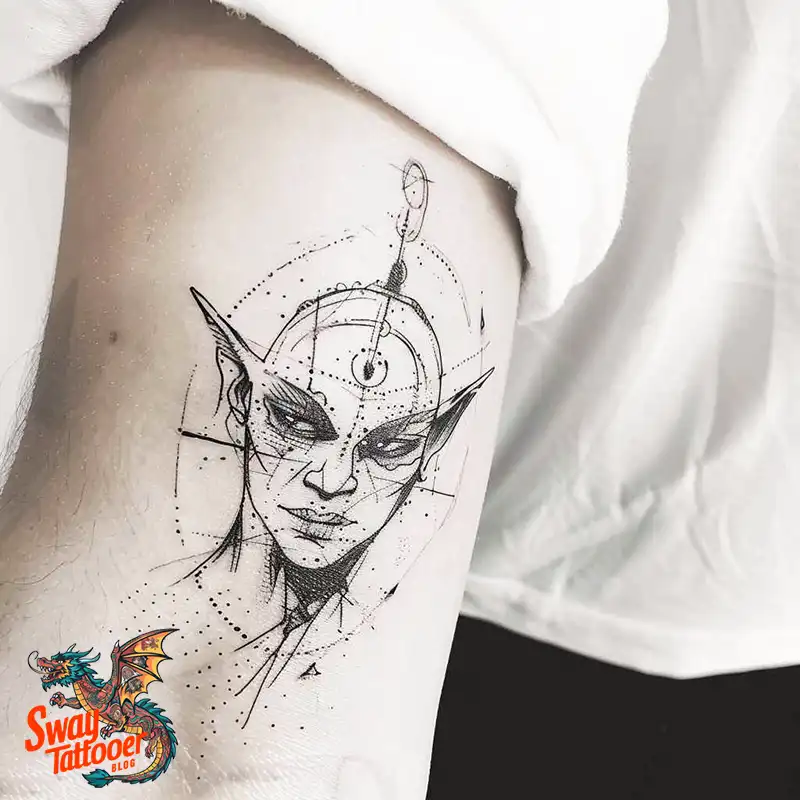
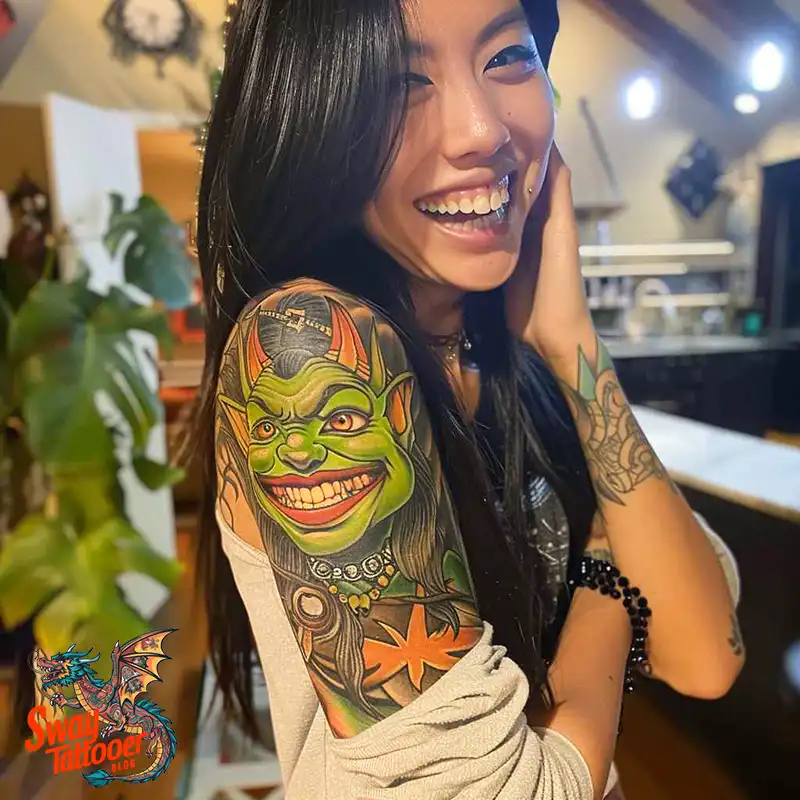


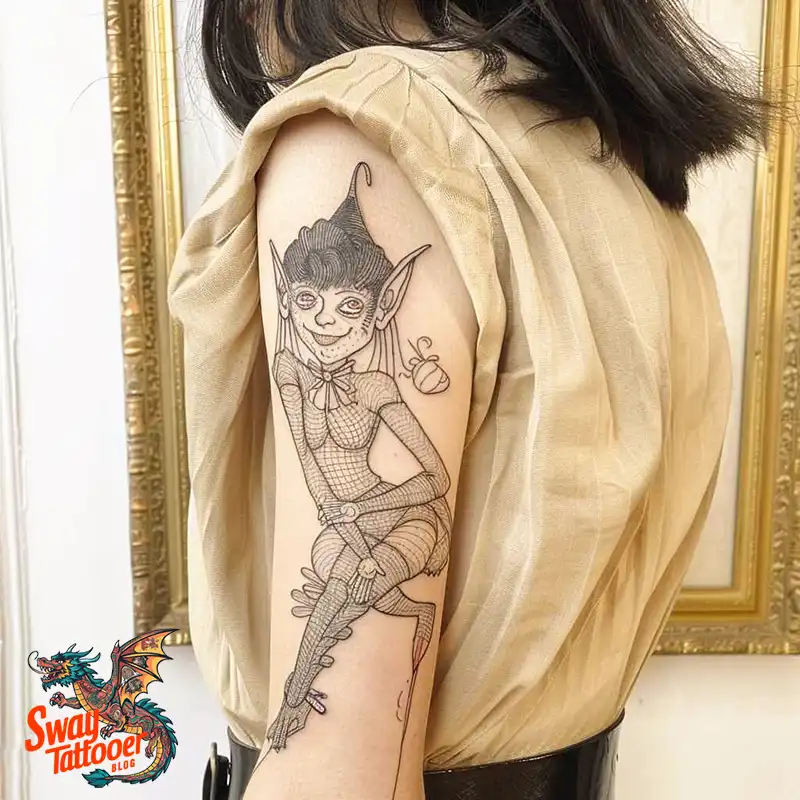


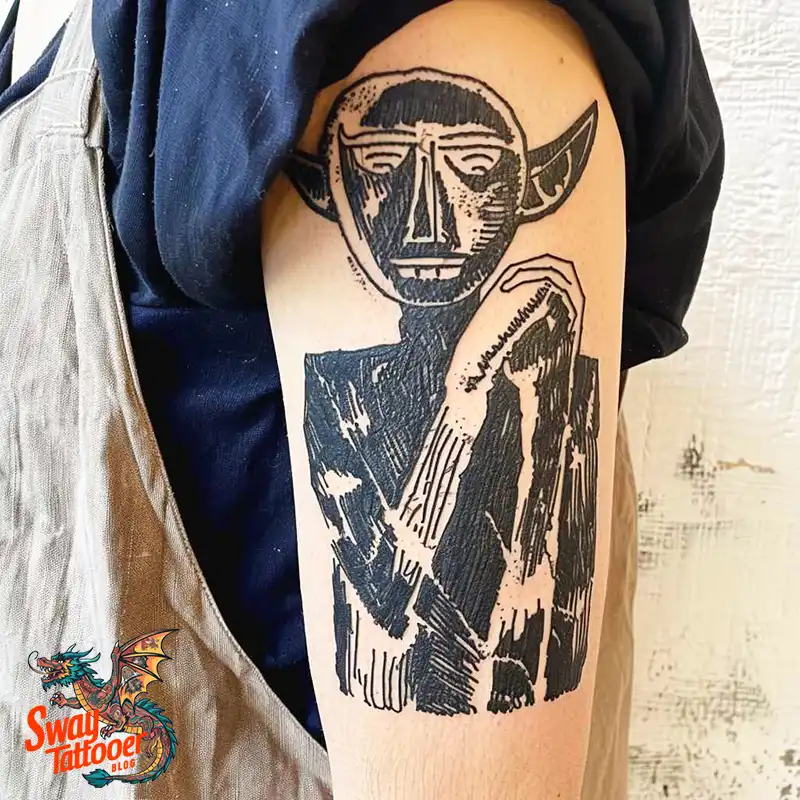
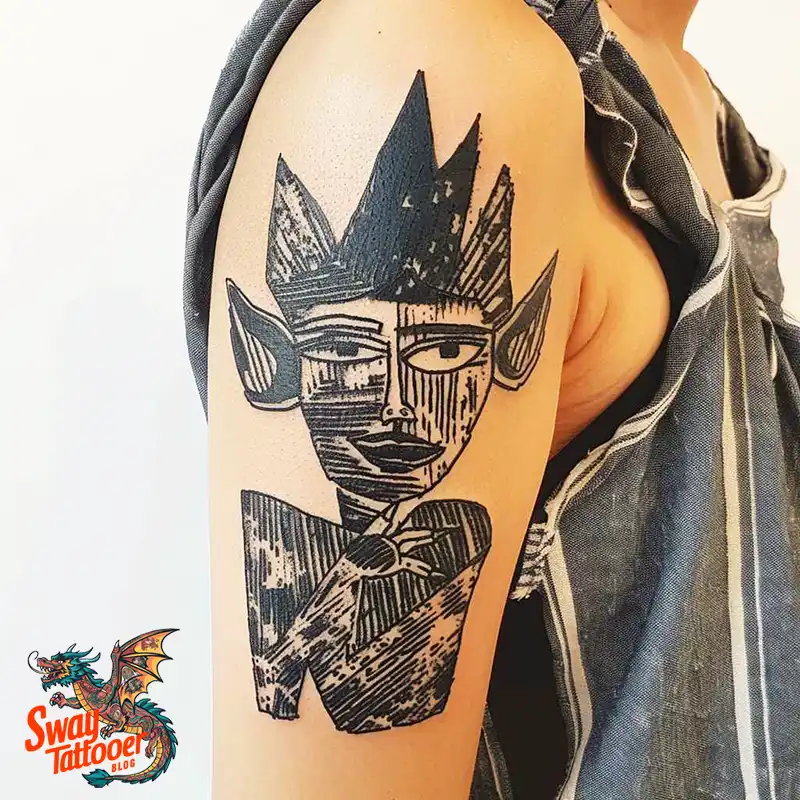

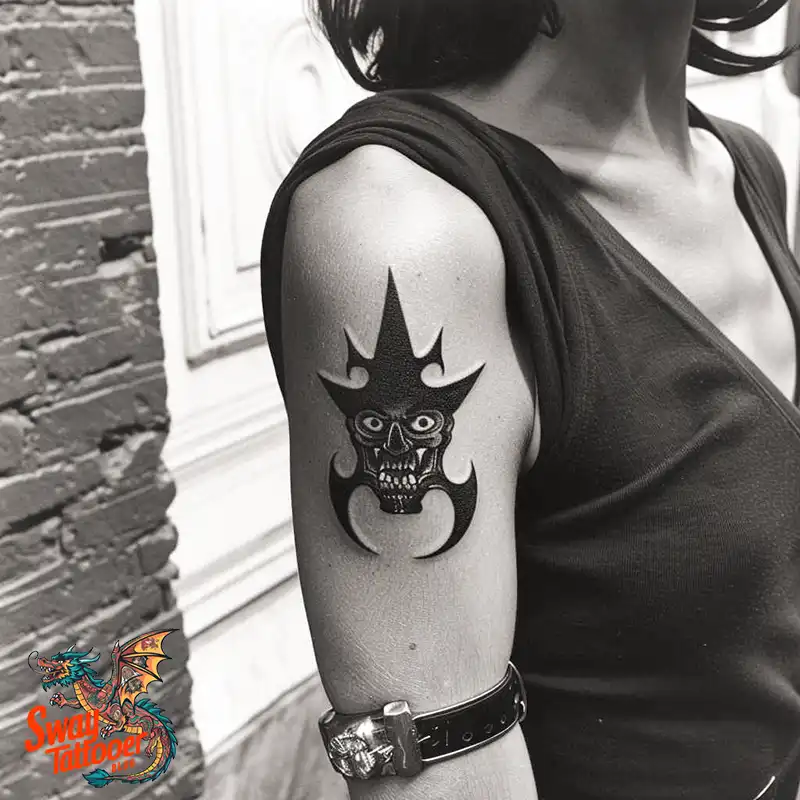
Narrative and Character Studies
You can use a goblin to tell a larger story, often pulling ideas from popular fantasy worlds.
- The Inner Demon: Placing a shapeshifting goblin on the back can represent the wearer’s internal psychological struggles. The shading work can show the drama of this inner change.
- Cunning Scenarios: Designs that show a goblin doing something clever—like two goblins playing a game of chess—can symbolize the creature’s cunning intelligence.
The Color Question and Technical Texture
- Green Skin: Goblins are often drawn with green skin, which in old stories meant ugliness. Today, artists use deep, rich colors like velvety greens, golds, and deep purples to make the creature look more magical and royal.
- Texture is Key: A great goblin tattoo requires skilled artists who can draw complex textures—like wrinkles in the skin or the texture of a cloak. This skill is needed to stop the detailed design from looking flat or blurry over time.
Strategic Placement:
The location of a detailed goblin tattoo is a key decision. You need to pick a place that balances what you want to say with how well the tattoo can last over time.
Placement by Symbolic Intent and Size
The meaning of your tattoo is often made stronger by where you put it on your body:
- Forearm and Wrist: These spots are highly visible and great for showing the symbols of mischief and rebellion right away. A small, detailed goblin face on the wrist can start a quick conversation about your unique interests. The forearm is also a good size for medium designs that hold a personal philosophy.
- Back and Upper Arm: The back is a large, flat canvas, perfect for big, detailed scenes or a single major figure. Placing a goblin here often means it is acting as a guardian spirit or protective gatekeeper. The back is also an ideal spot for a detailed piece showing the goblin as a shapeshifter or an inner demon.
- Thigh: The thigh is a very stable area of the body, which is excellent for large, intricate fantasy panels or realistic portraits that need a lot of detail and shading.


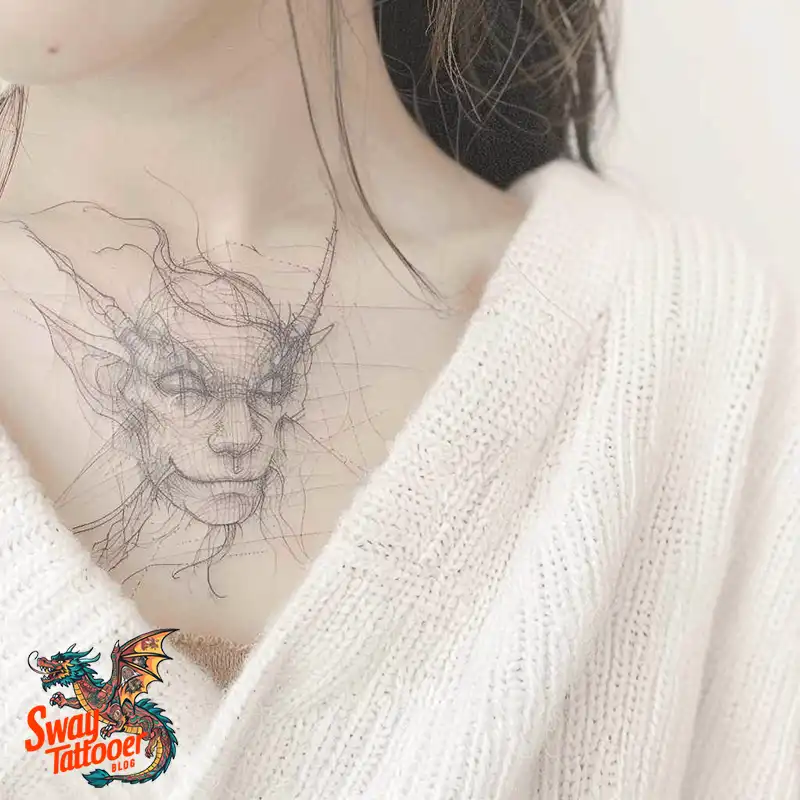
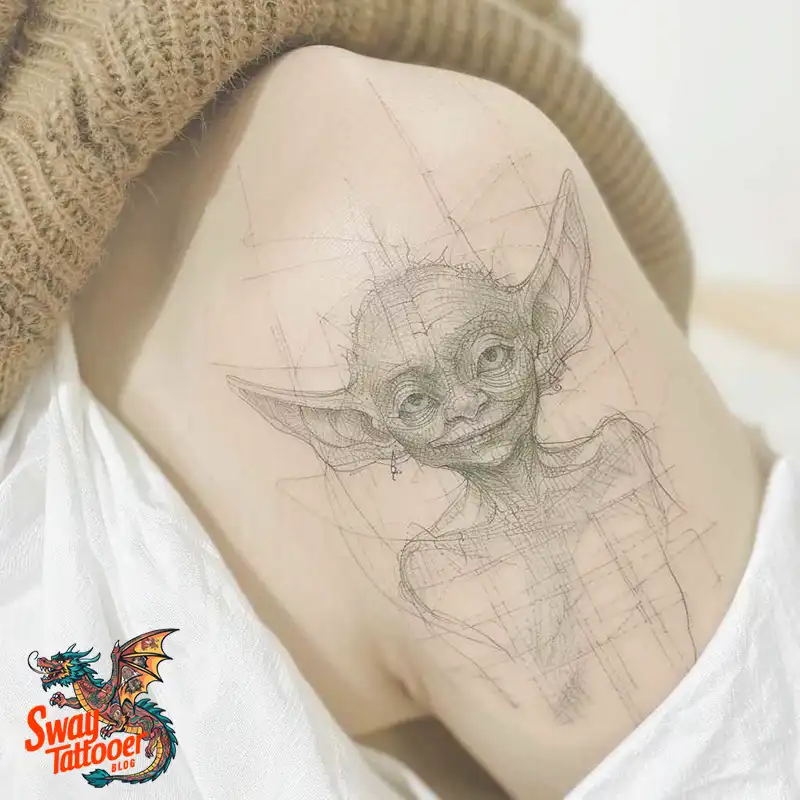

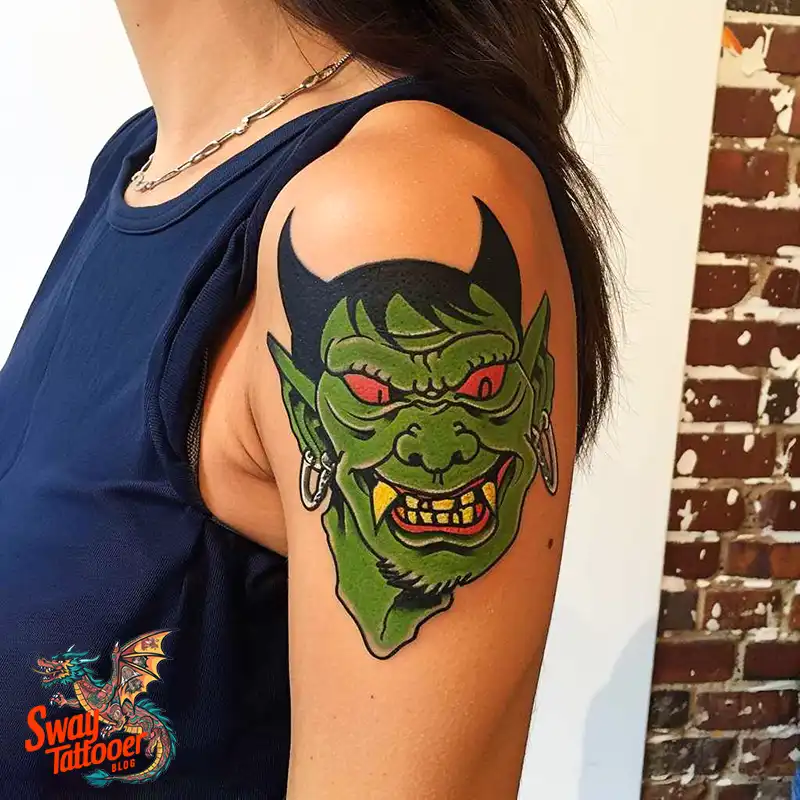
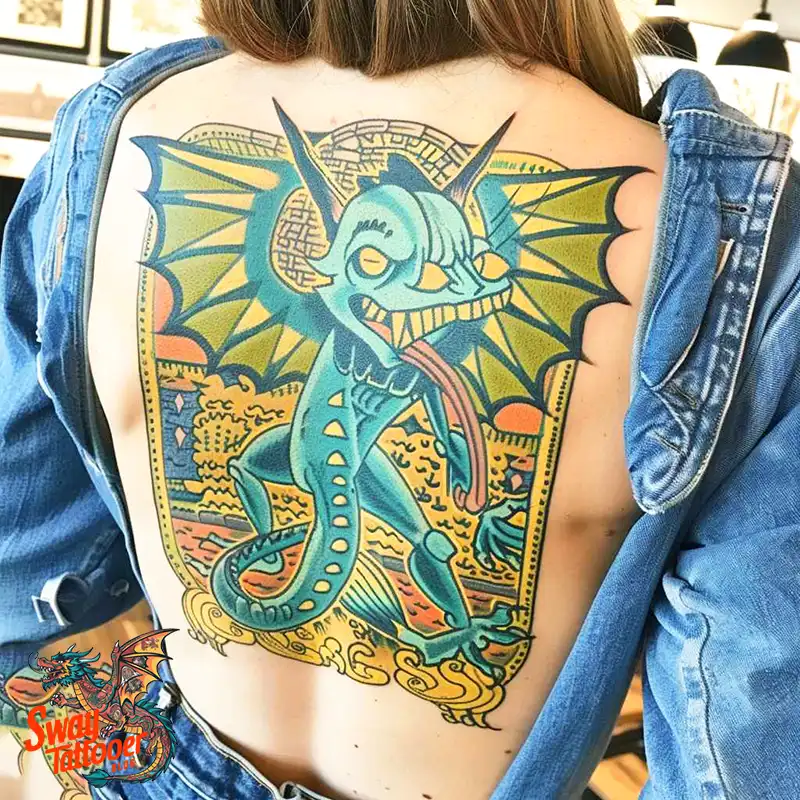

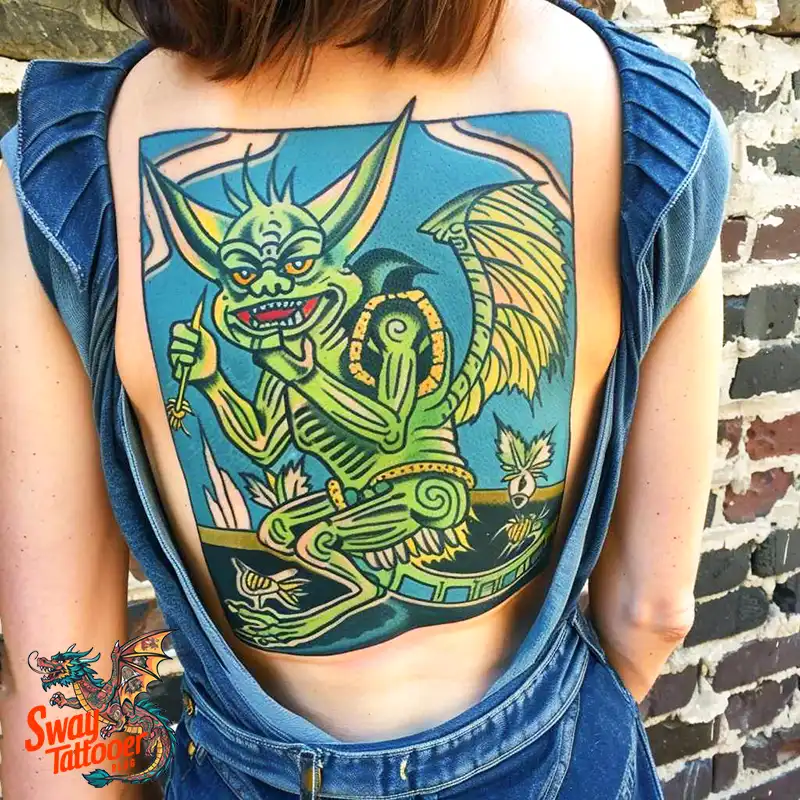

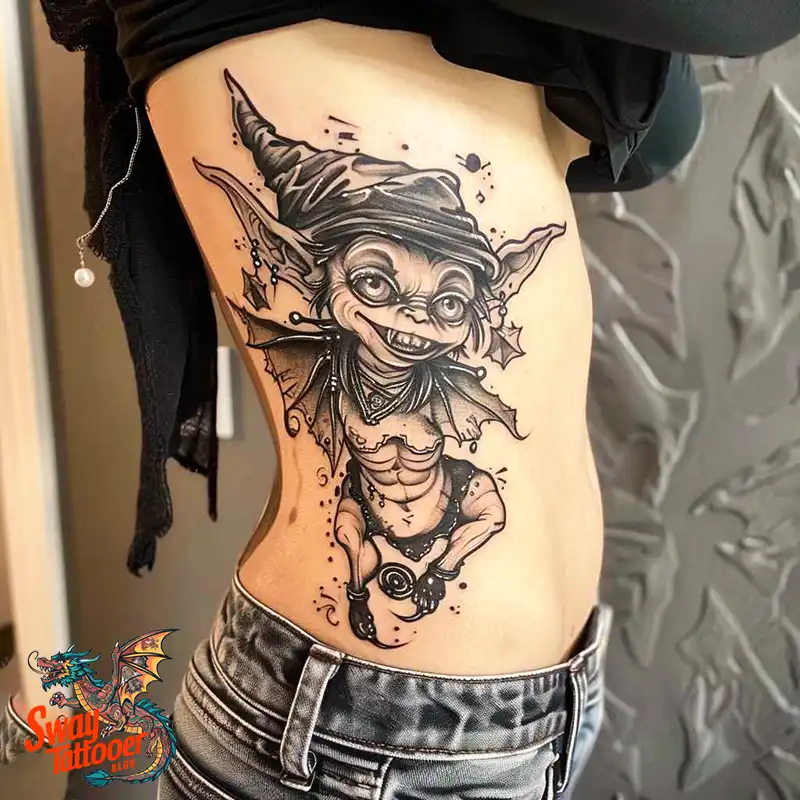


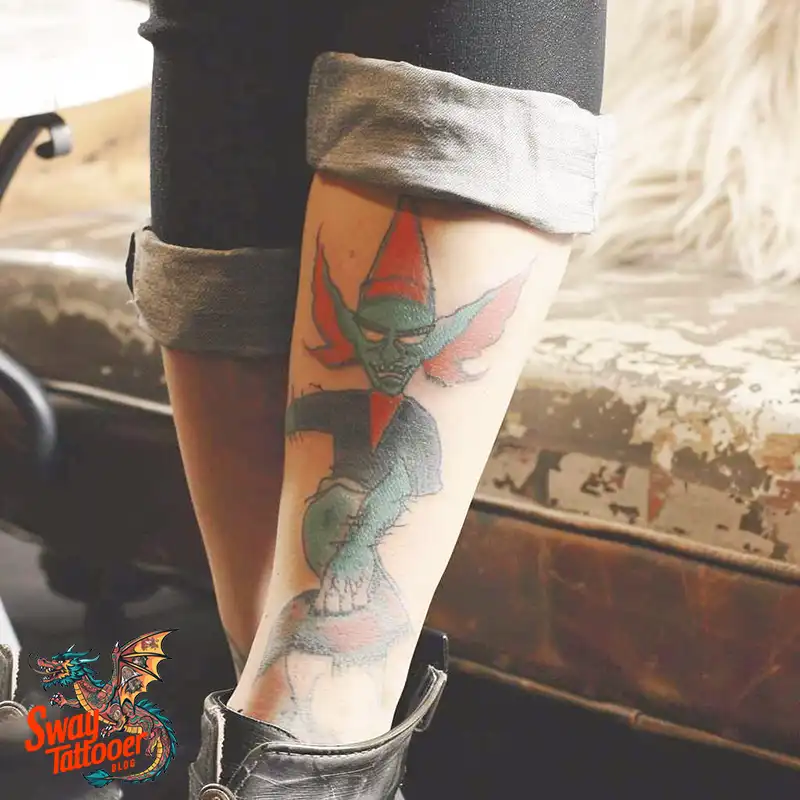
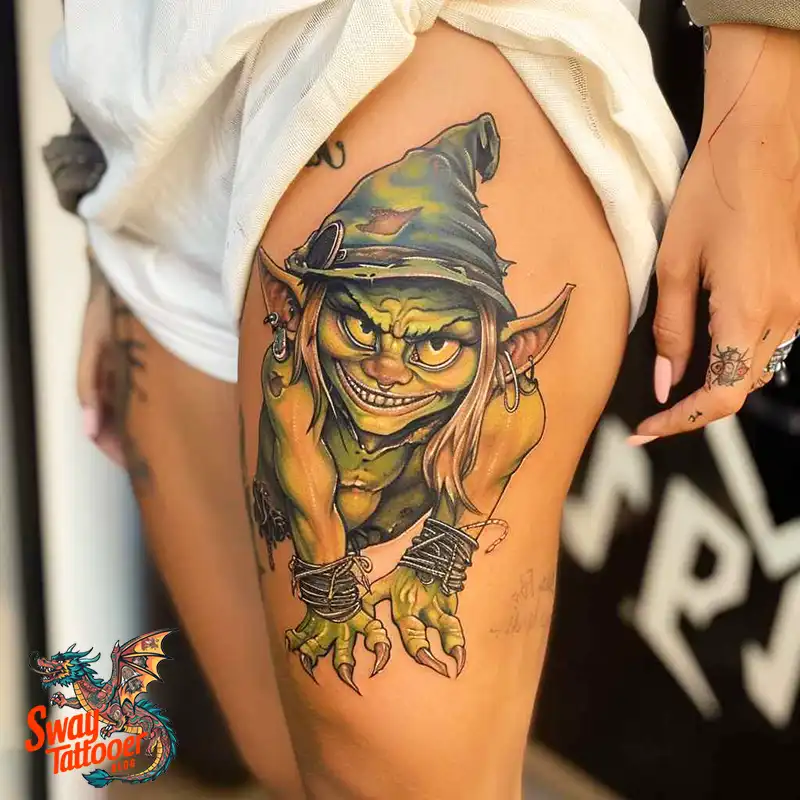
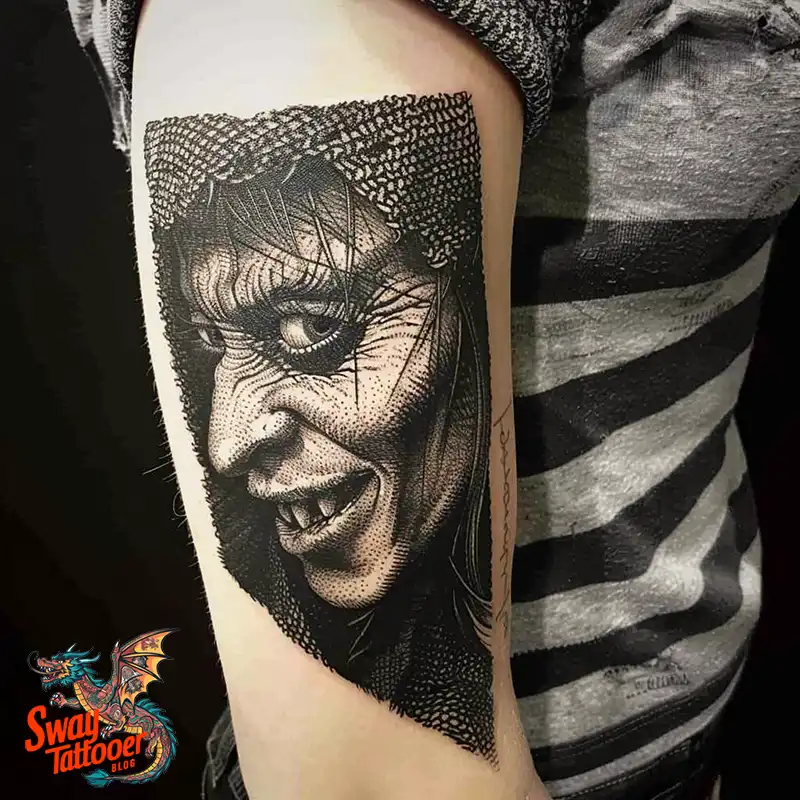
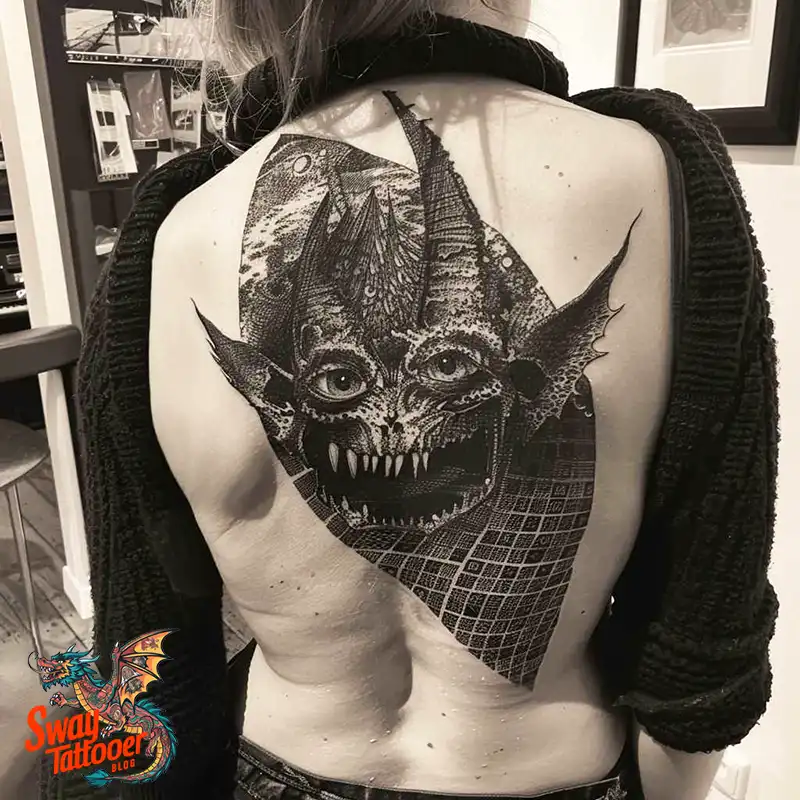
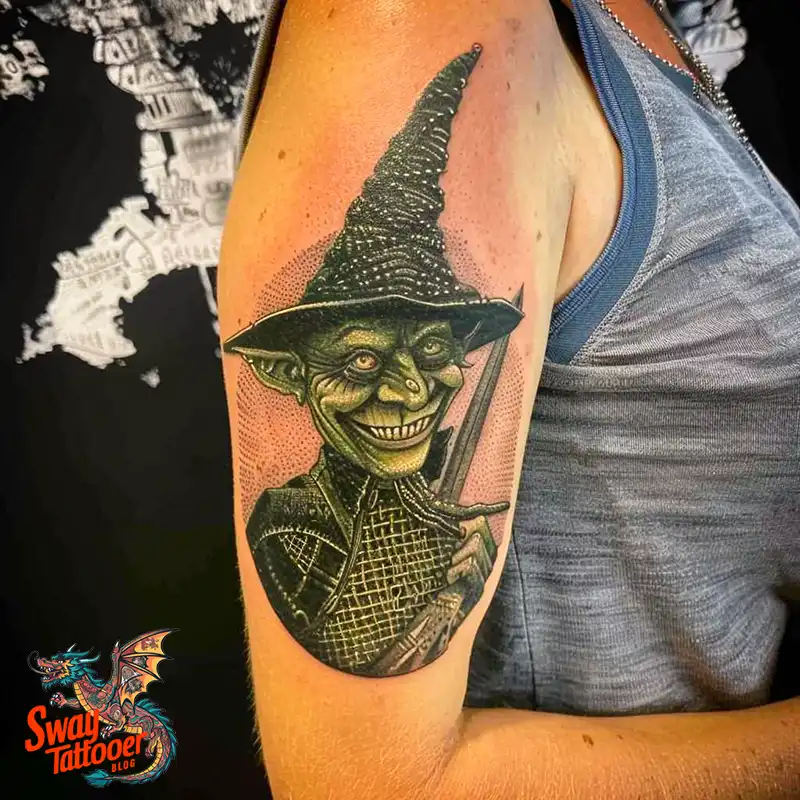
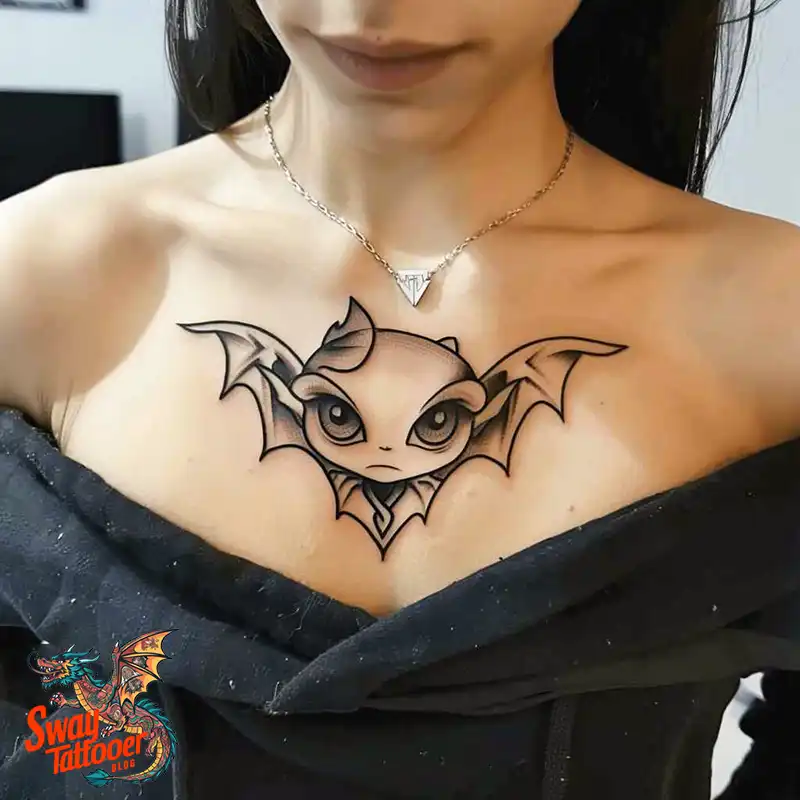
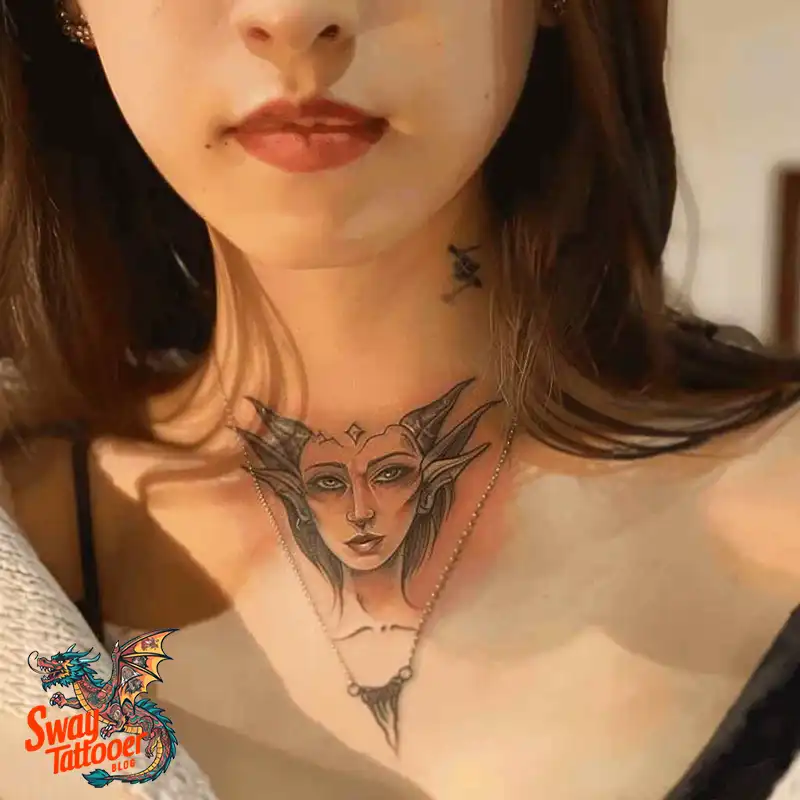
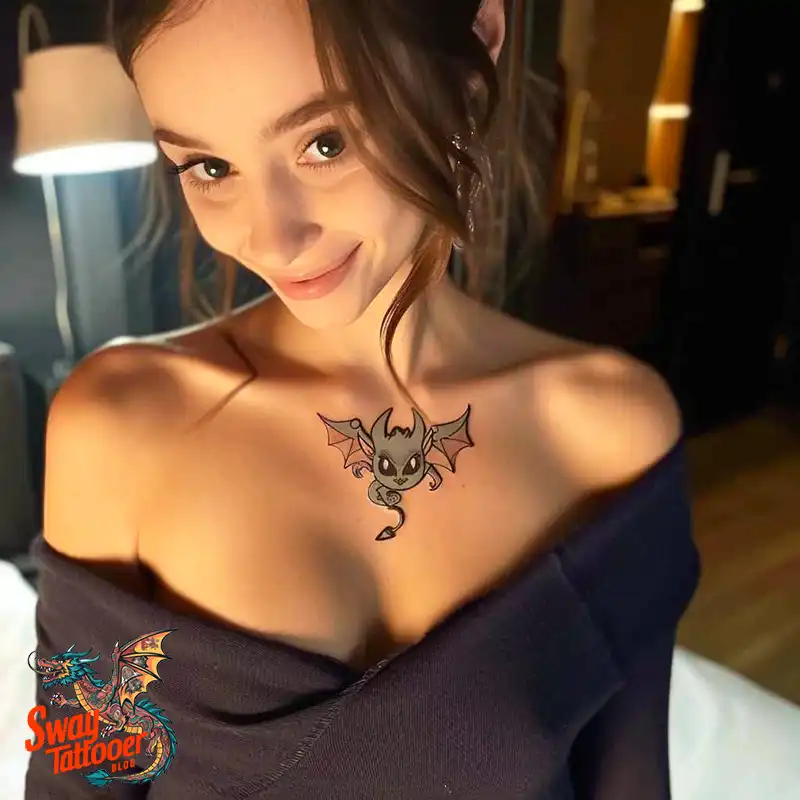
Longevity and Skin Dynamics
For a detailed fantasy tattoo, choosing a stable spot is vital for preserving the fine lines and color saturation.
- Optimal Stability: Areas like the upper back, outer thigh, and forearms are recommended. They do not stretch or move a lot, which helps the sharp lines and colors last for many years.
- High-Risk Zones: Spots with thin skin or high movement, like the wrists, ankles, or inner arms, are risky for detailed work. Movement in these areas can cause the ink to spread (known as blowout) or fade much faster.
The thigh is often the best choice for a complex, colorful Neo Traditional Goblin Tattoo because it provides a large, stable area for the artist to work comfortably over many hours, ensuring the detailed work heals correctly.
Table: Placement Strategy for Detailed Goblin Tattoos
| Body Area | Typical Size Range | Symbolic Alignment | Pros (Longevity/Detail) | Cons (Pain/Fading Risk) |
| Forearm/Calf | Medium to Large | Rebellion, Visibility, Personal Philosophy | Stable canvas, good movement retention, moderate pain | High sun exposure (requires vigilant SPF). |
| Upper Back/Shoulder | Large (Mural/Scene) | Protection, Guardianship, Inner Depth | Excellent longevity, low movement, easy to conceal, low-moderate pain | High cost and time commitment. |
| Wrist/Ankle | Small, High Detail | Instant Attention, Eccentricity | High visibility, quick execution. | Prone to blowout due to thin skin; faster fading/blurring due to movement. |
| Thigh | Large (Sleeve/Panel) | Complex Narrative, Personal Depth | Largest stable area for extreme detail (Realism/Neo-Traditional) | Longer healing time; often covered, limiting visibility. |
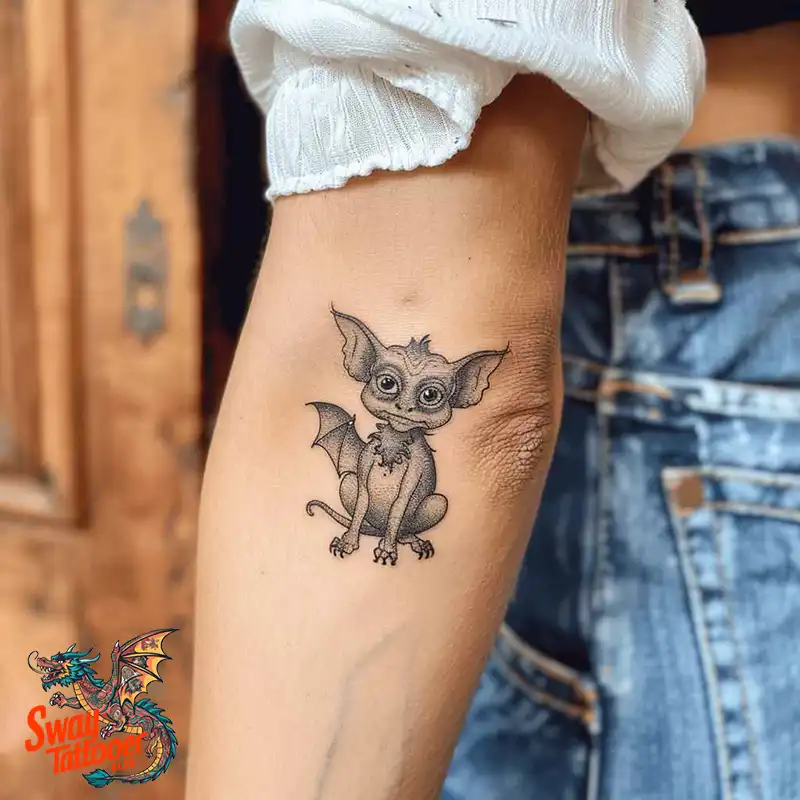
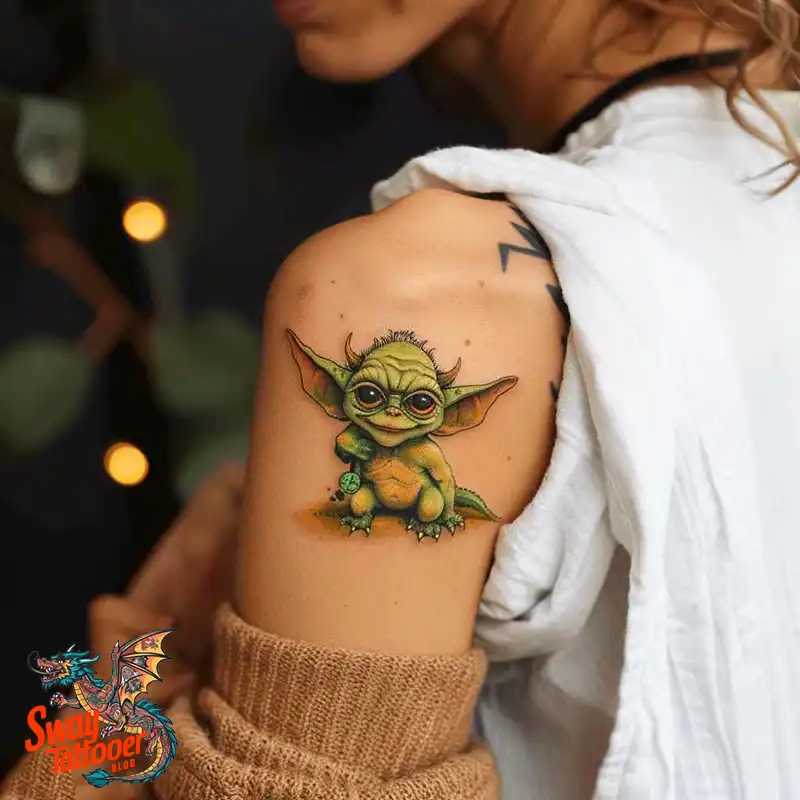
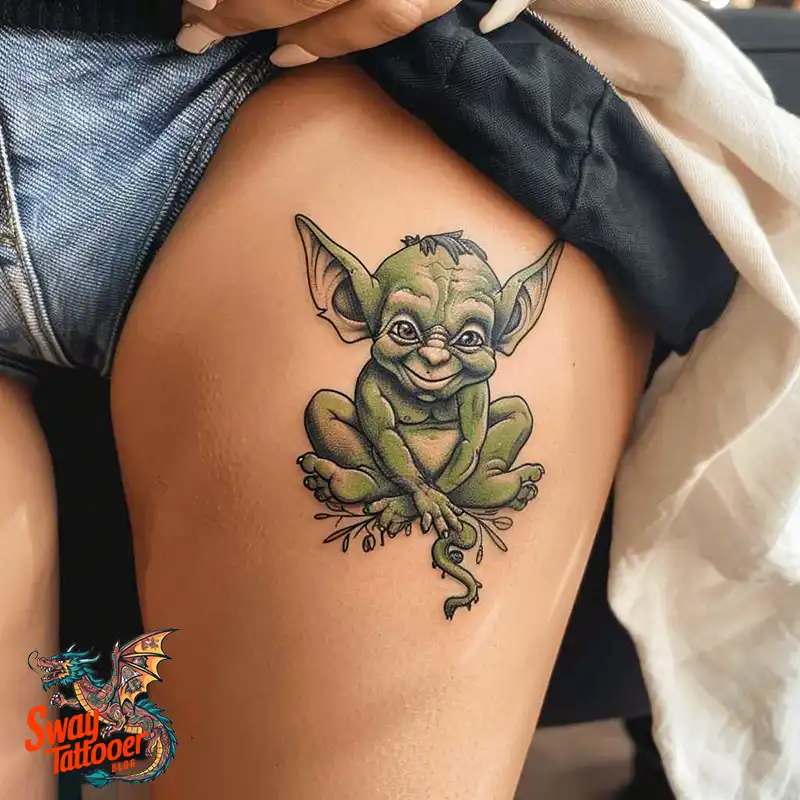
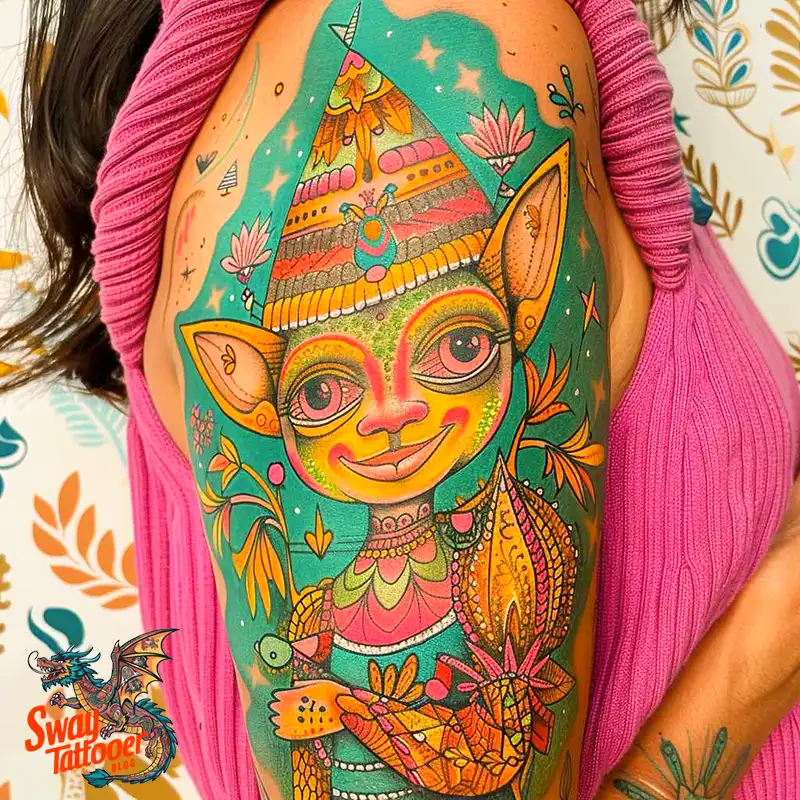

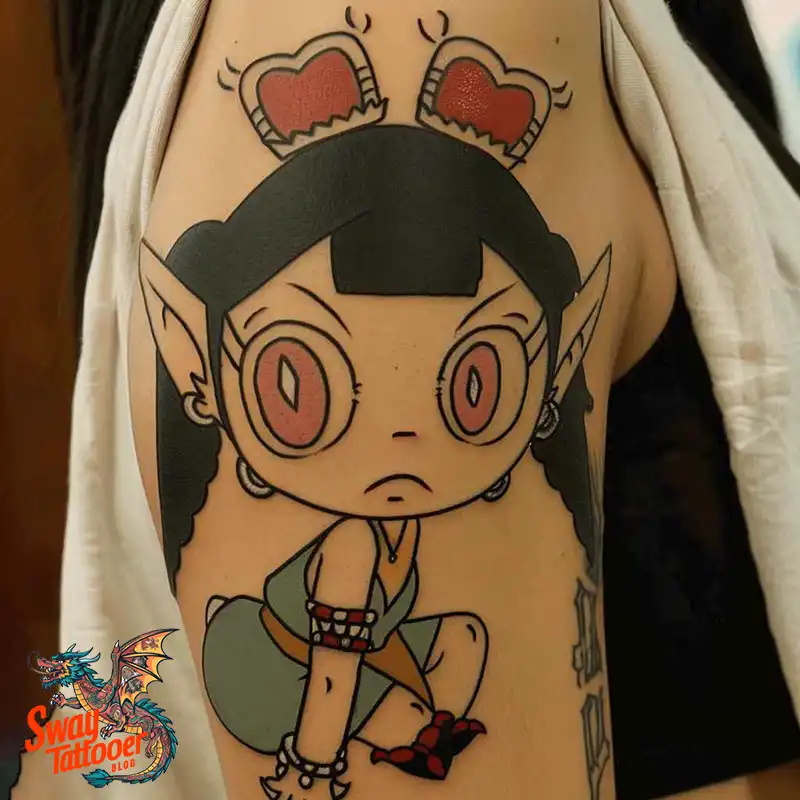
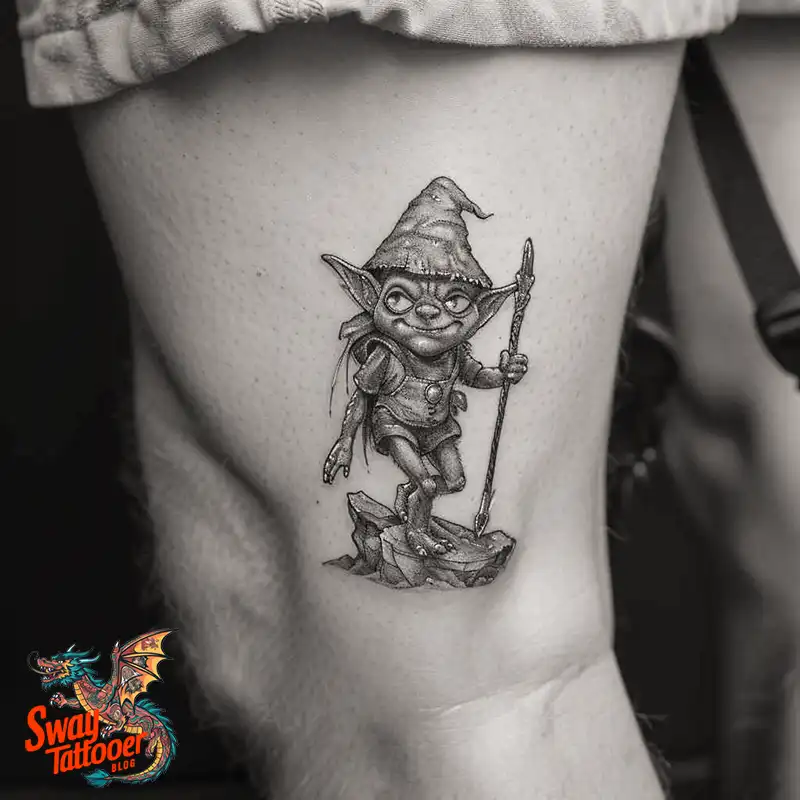
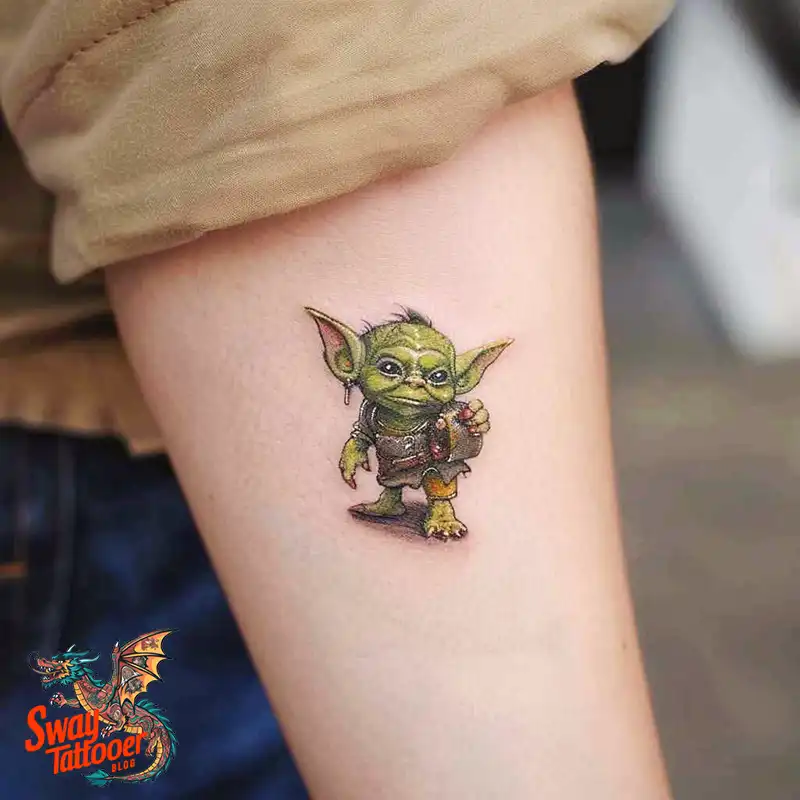

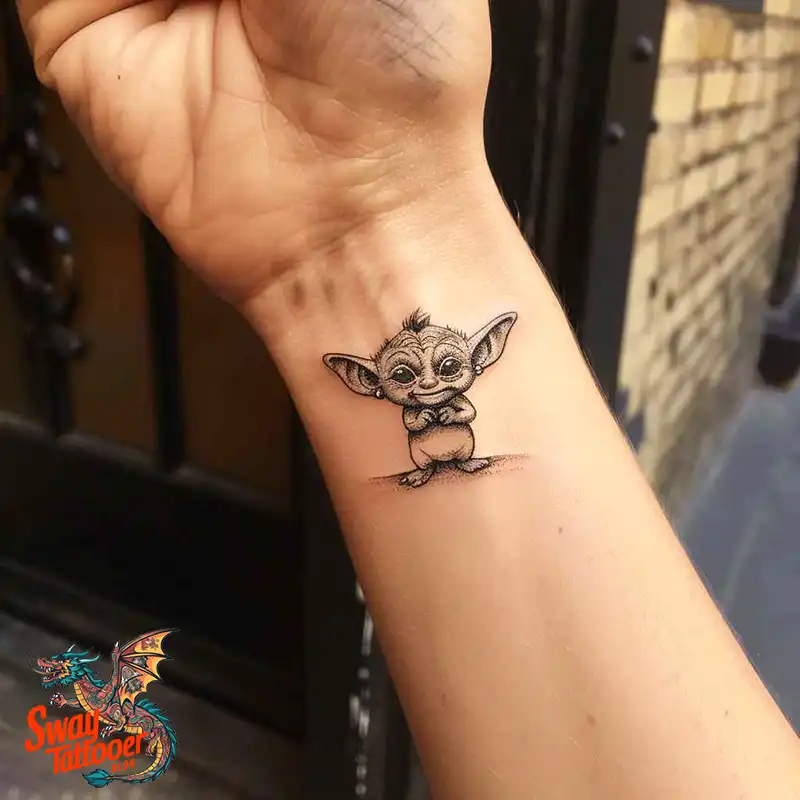
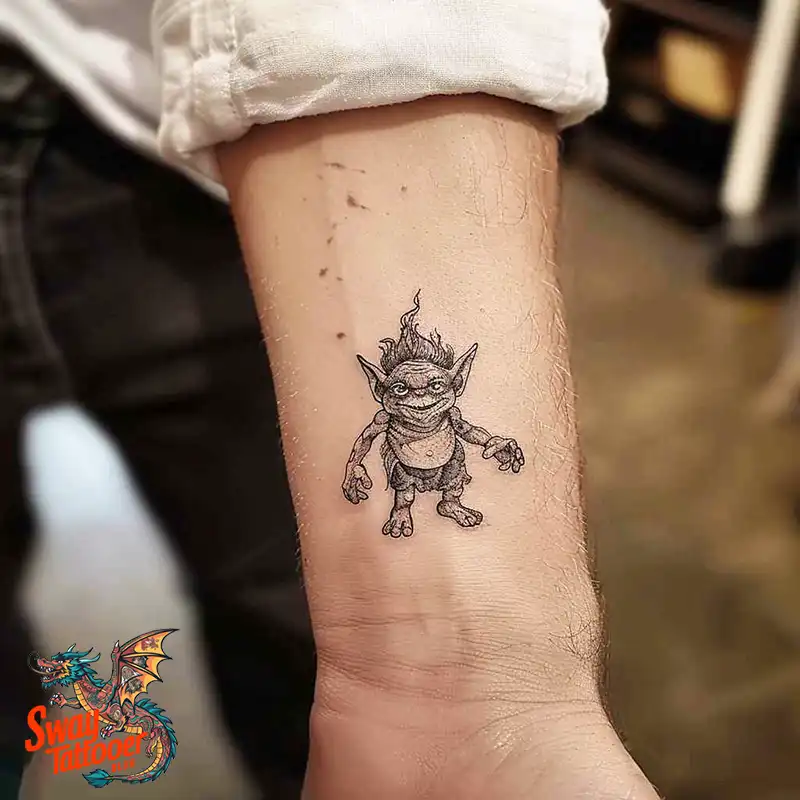

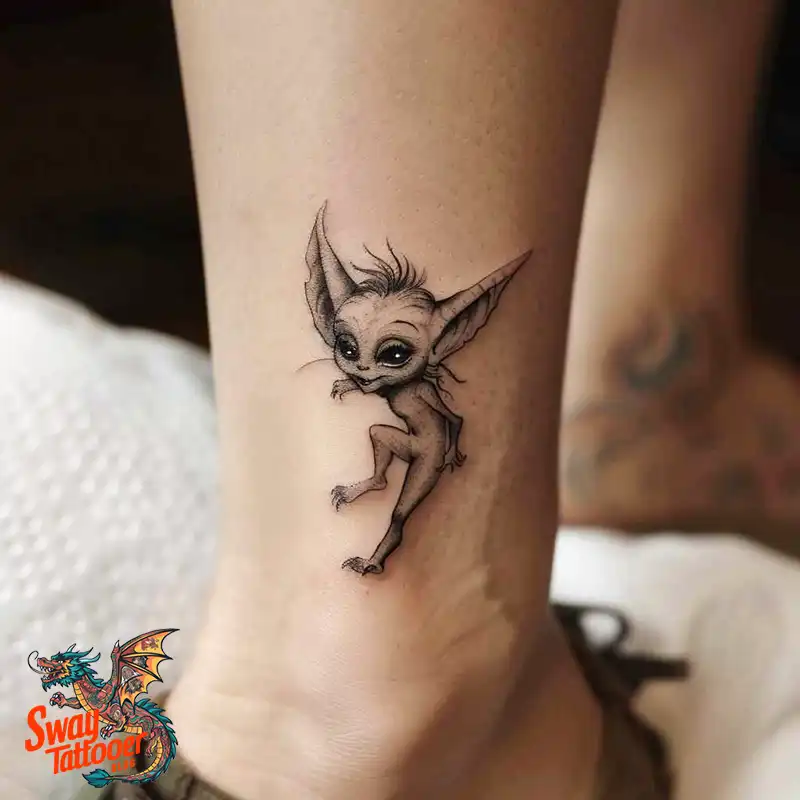
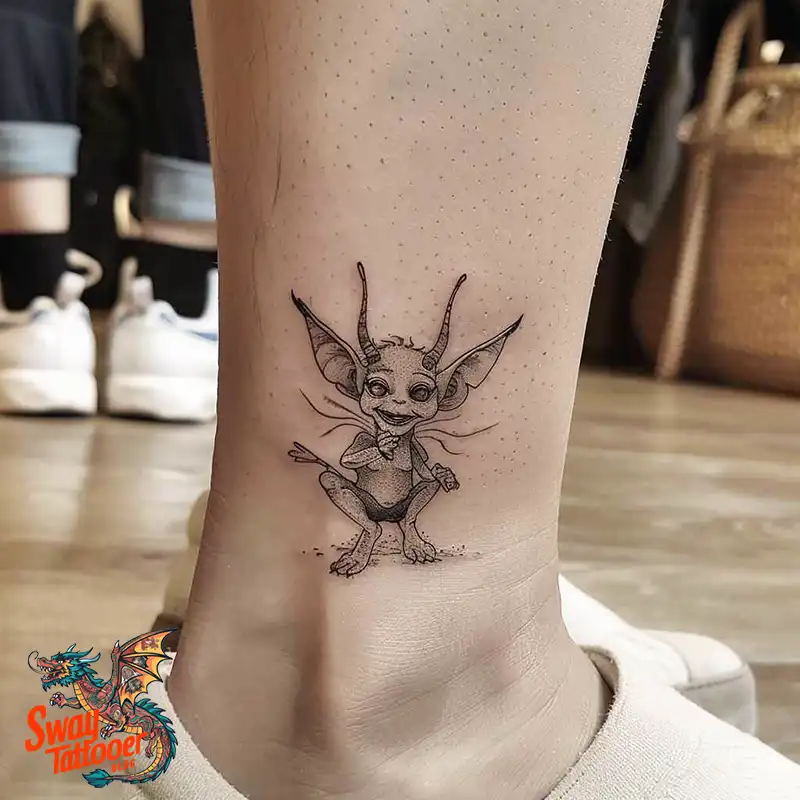
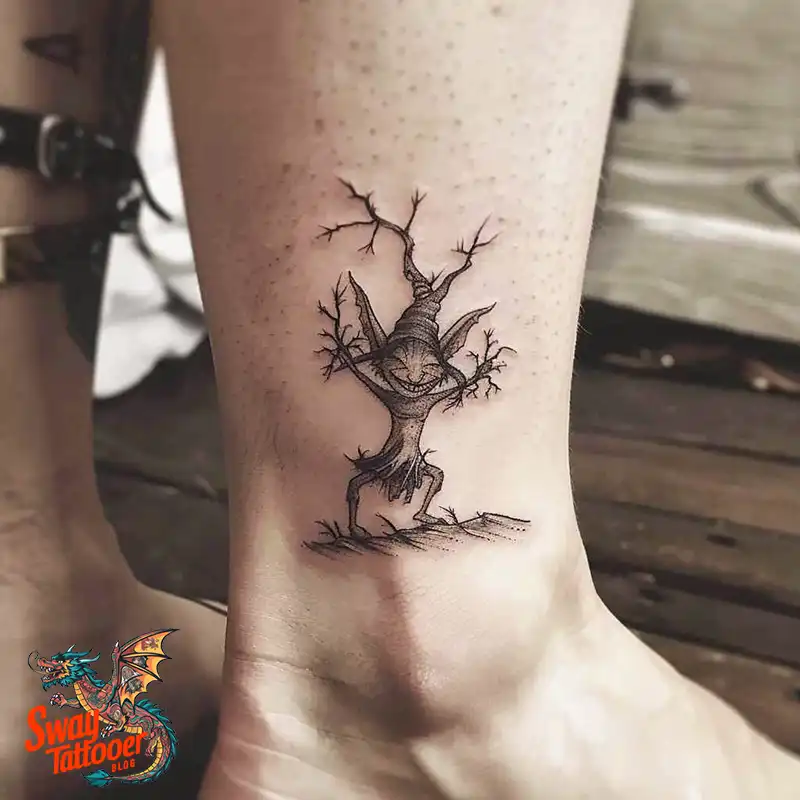


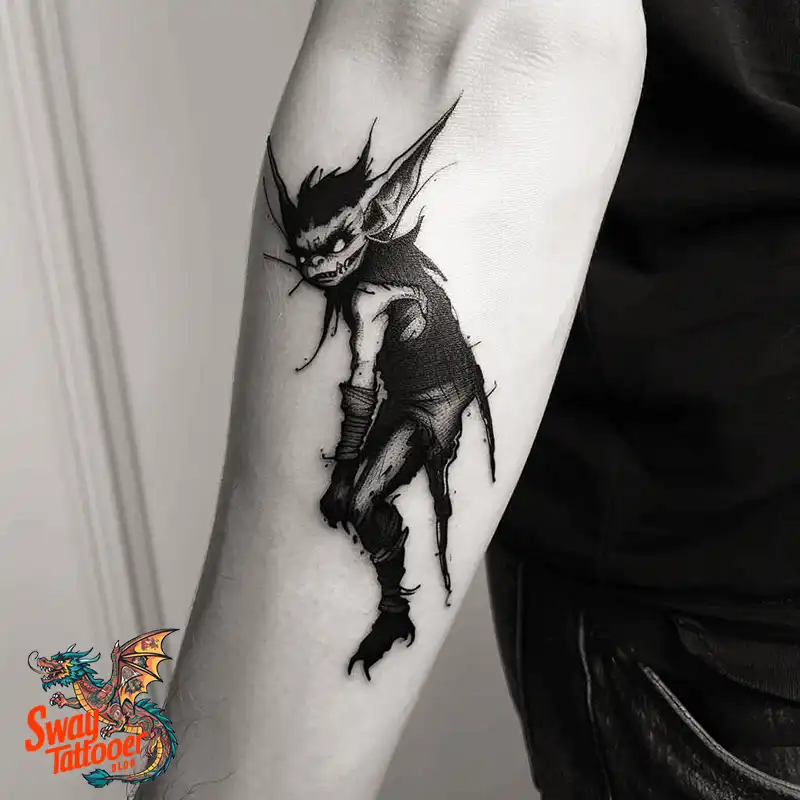
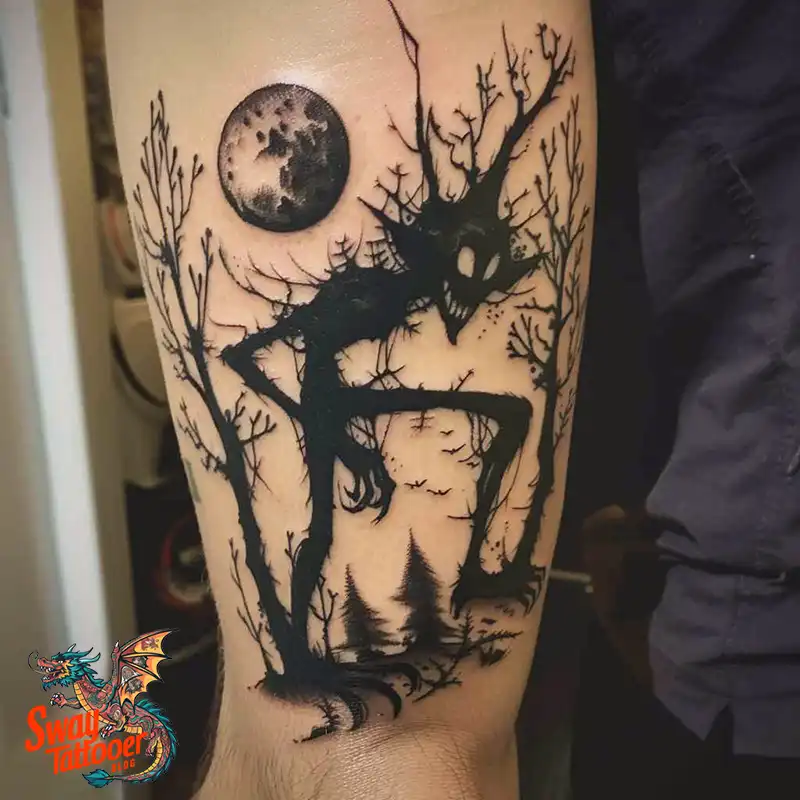


Aftercare for Fantasy Ink:
Detailed aftercare is essential for a goblin tattoo, especially if you use bright colors like the traditional green skin tone. The goal is to keep the skin healthy so the color stays rich and bright.
Immediate and Essential Cleaning Protocols
- Cleaning: Wash the area gently 3–5 times a day using a mild, unscented, antibacterial soap and lukewarm water. Always pat the skin dry with a clean paper towel; never rub.
- Moisturizing: For the first few days, apply only a thin, breathable layer of an artist-approved ointment. After that, switch to a simple, unscented lotion. Too much cream can stop the skin from breathing and pull out the ink.
- Avoid Picking: You must not pick or scratch at the flaking or scabbing skin. This can pull out the ink and cause patchy color loss. The tattoo must also be kept out of baths, pools, and oceans for at least two weeks to avoid infection.
The Sun Protection Mandate
The green color of a goblin’s skin is sensitive to sunlight.
- High Fading Risk: Color pigments—especially yellow and green—fade quickly when hit by UV light. Since green ink uses yellow, a vibrant green tattoo is technically high-maintenance and prone to fading.
- Lifelong SPF: During the initial healing (first 2-4 weeks), keep the tattoo completely covered when outside. After it is fully healed, you must apply SPF 50+ sunscreen every day it is exposed to the sun. This is the only way to protect the color and quality of your fantasy ink.


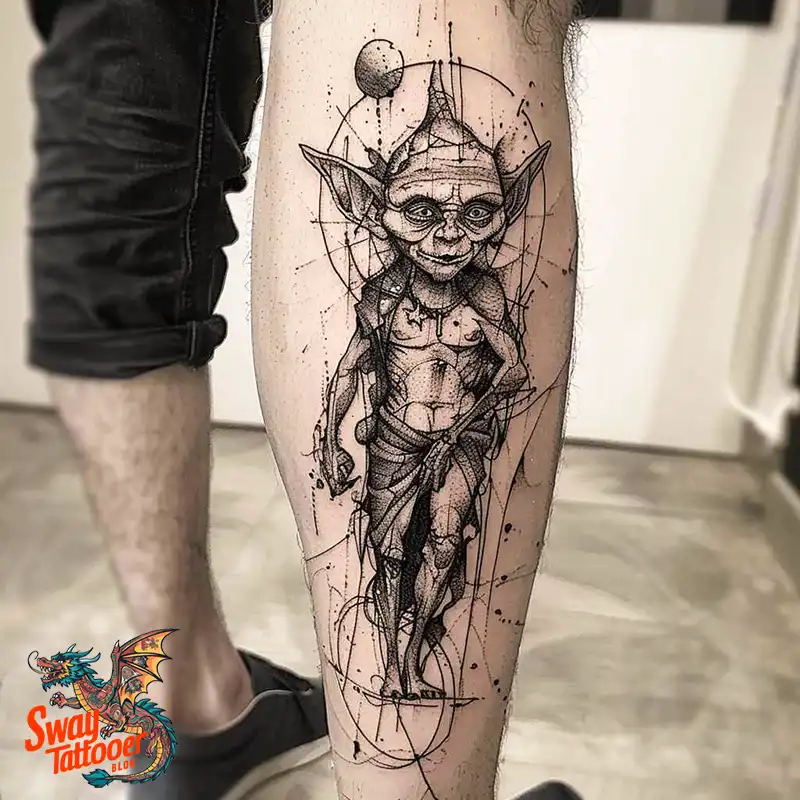
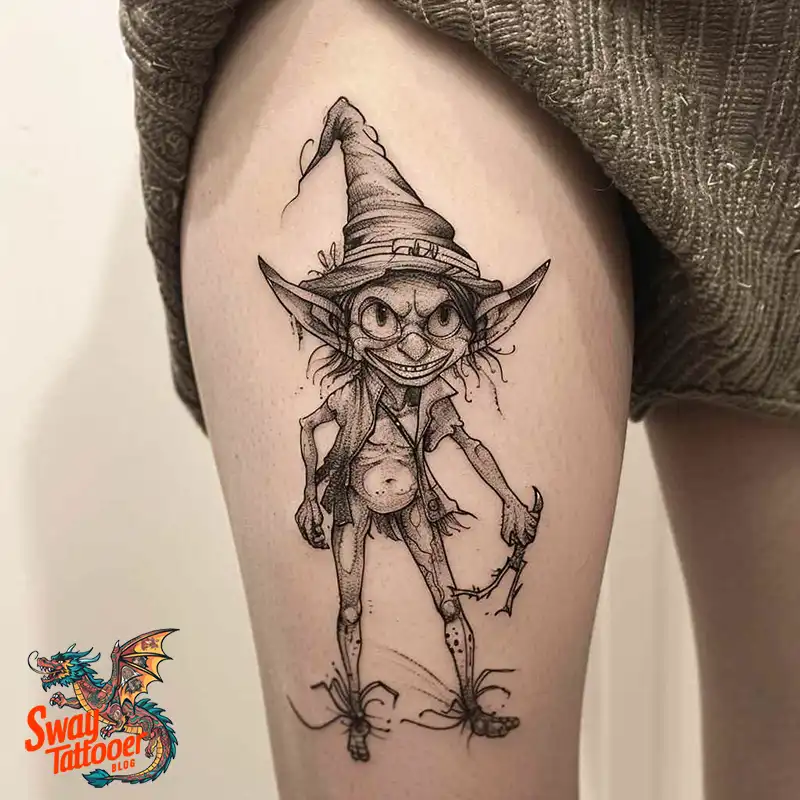
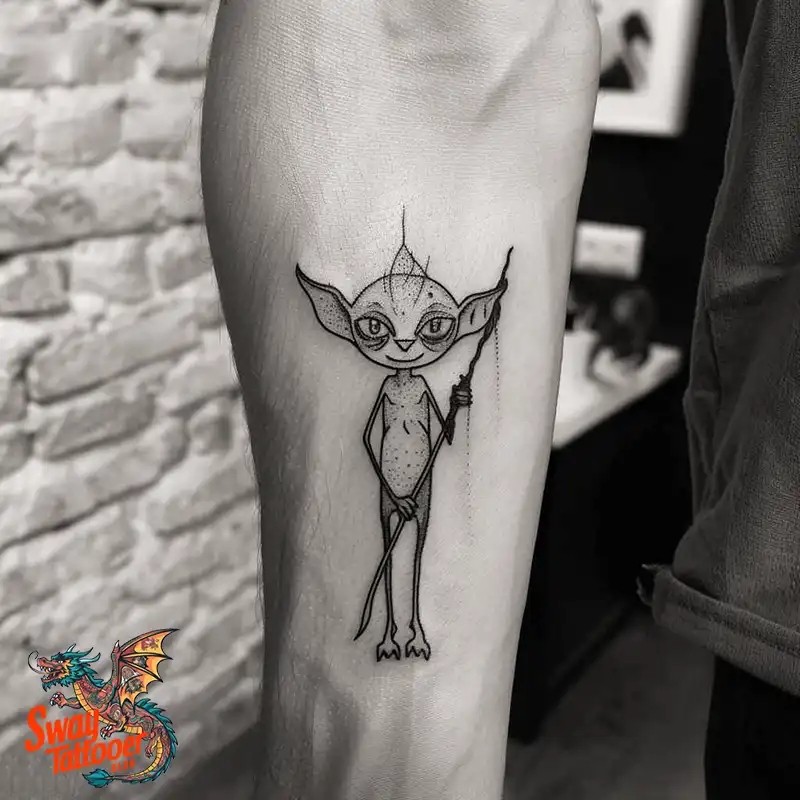
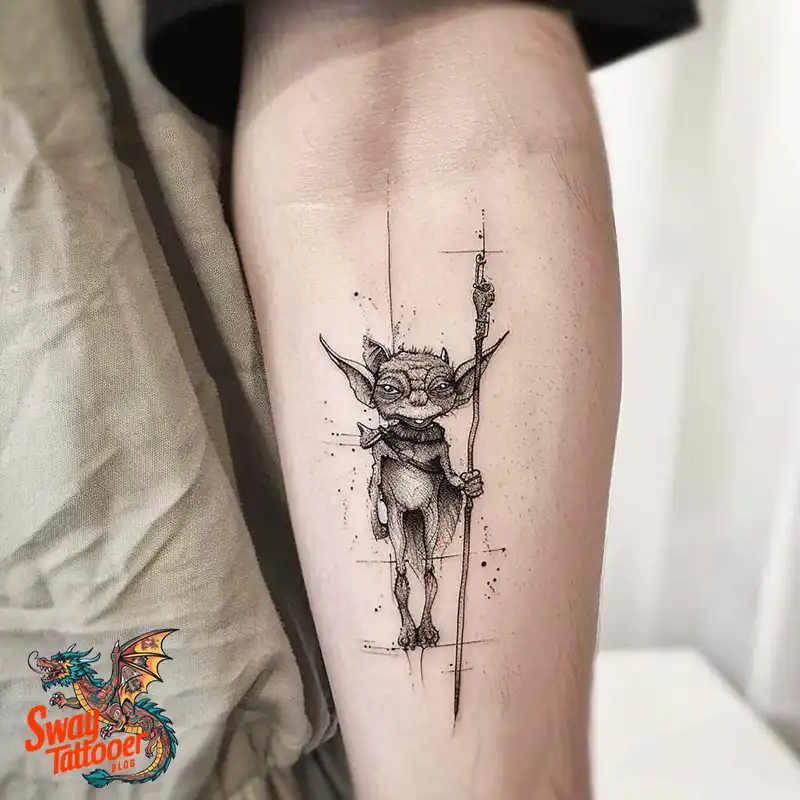
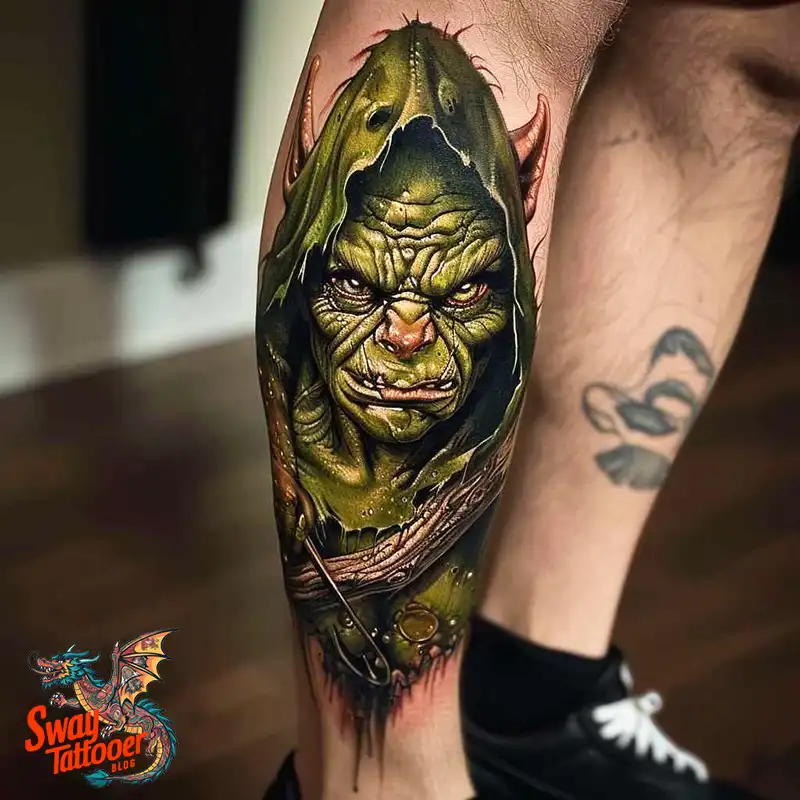

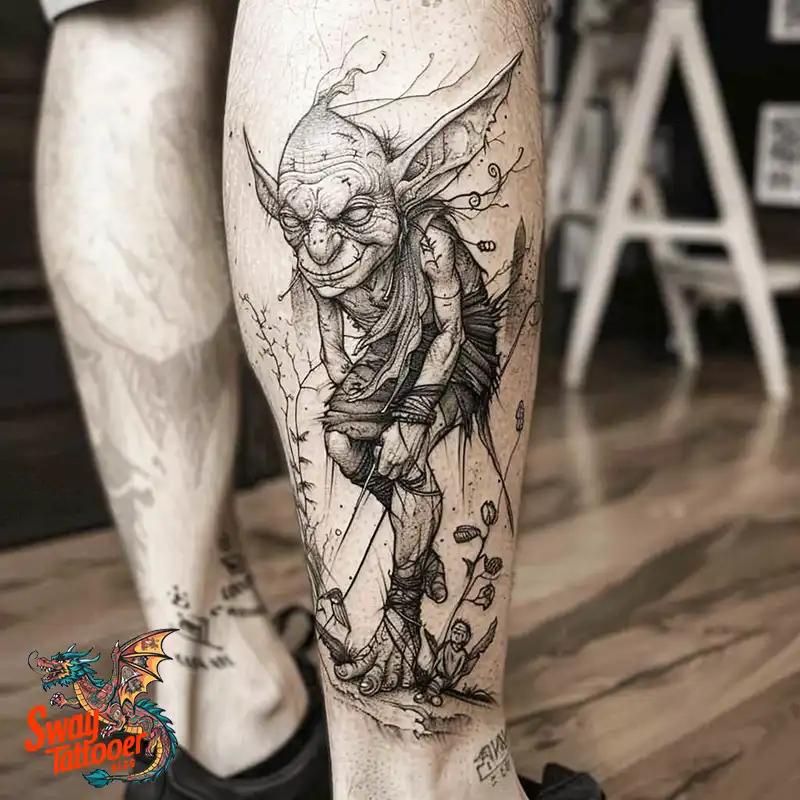


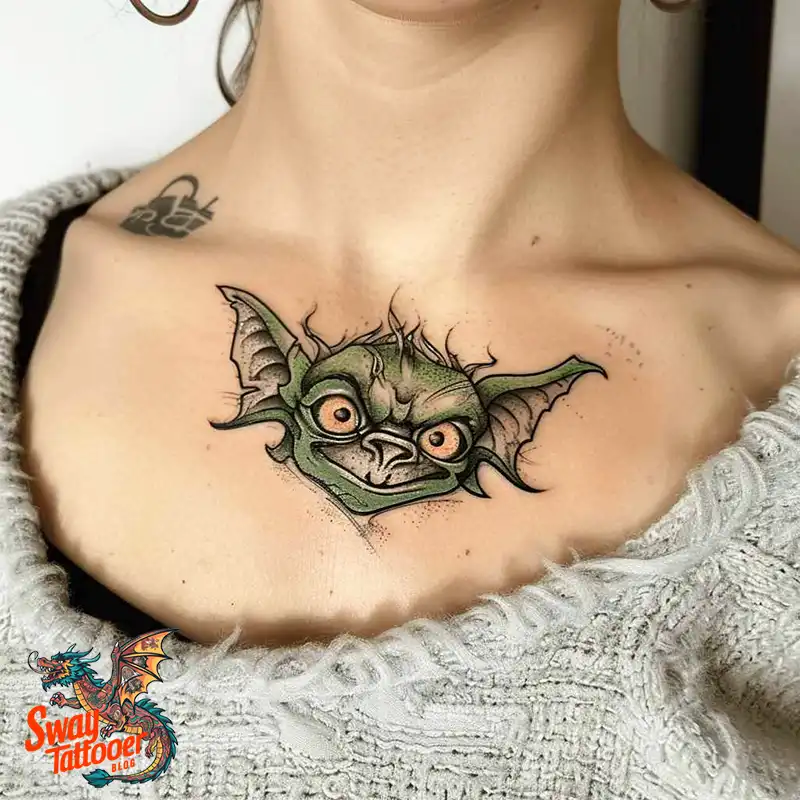

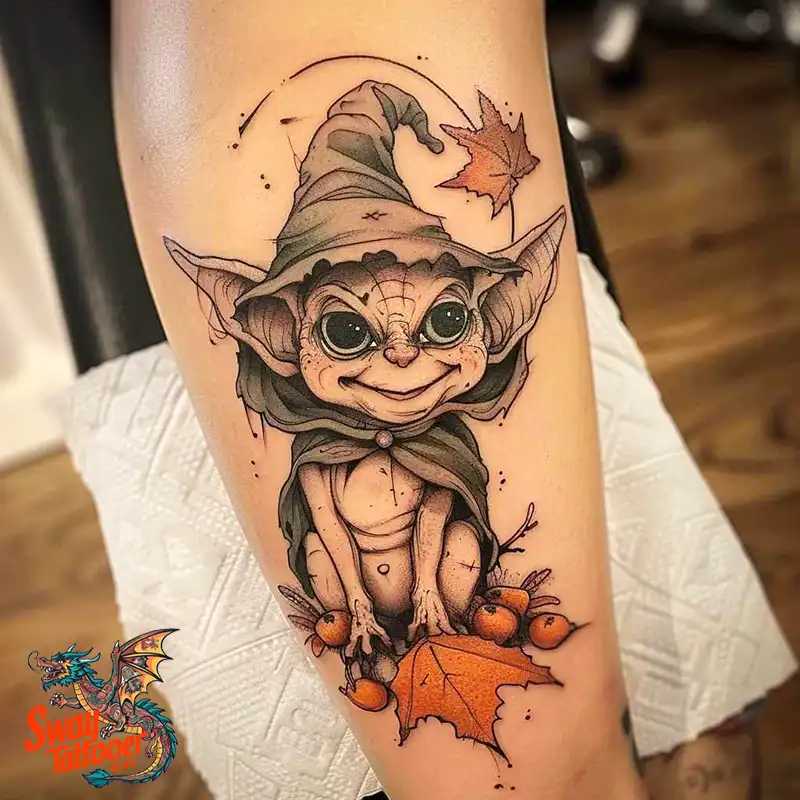
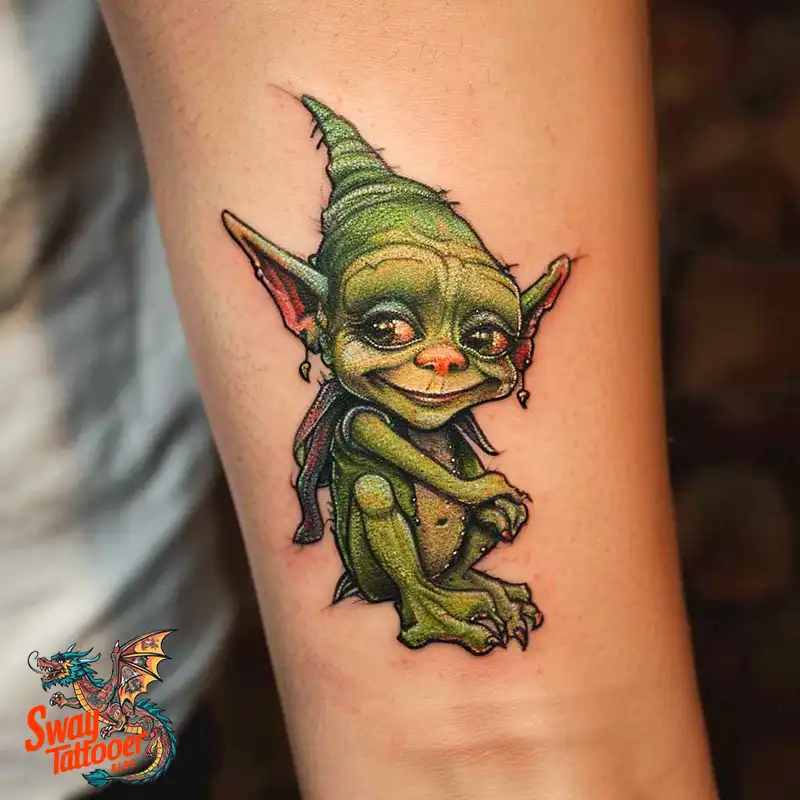


FAQs:
1. What is the symbolic difference between goblins in D&D/Fantasy and historical folklore?
In D&D, goblins are often shown as simple evil creatures. However, in old folklore, they had many roles, from malicious spirits to helpful household creatures. For a tattoo, the modern meaning often centers on the creature’s status as the Trickster Archetype—symbolizing resilience, change, and a rebellious nature.
2. How long does a complex goblin tattoo typically take?
The time depends on the size and style. A small design may take a few hours. However, a large, detailed design in full-color Neo-Traditional or Realism on a thigh or back requires intense shading and color work. These complex pieces can require multiple sessions, totaling 10 to 30 or more hours of work.
3. How do I ensure my artist can handle the detailed textures required for a realistic goblin?
A great goblin design needs an artist who is a master of texturization—drawing wrinkled skin, deep shadows, and intricate details like armor. You should only look at artists whose portfolios show expertise in detailed Realism or richly textured Neo-Traditional fantasy creatures.
4. Why are colorful goblin tattoos considered high-maintenance?
The green skin color is high-maintenance because green ink contains yellow pigment. Yellow is one of the colors most easily broken down by UV light. To keep your vibrant fantasy colors, you need unwavering sun protection, including daily use of high-SPF sunscreen.
Conclusions:
The goblin tattoo is a complex and unique choice in body art. It offers a great mix of dark fantasy looks and deep psychological meaning. The creature’s history as a Trickster and its dual role as a rebellious outsider and a protective guardian provide a powerful story of change and resilience.
For a long-lasting, vibrant tattoo, you should choose the Neo-Traditional style. Its bold outlines and strong color packing will age better than the delicate shading of Realism. Remember that choosing a colorful goblin requires a lifelong commitment to sun protection to ensure the vibrant green remains rich and saturated, keeping the quality of your fantasy art strong for years to come.


Leave a Reply